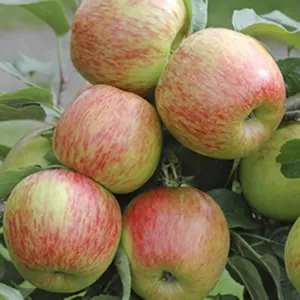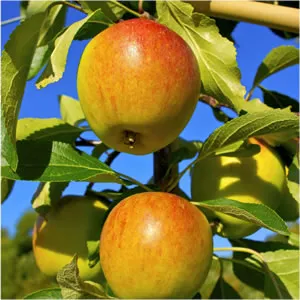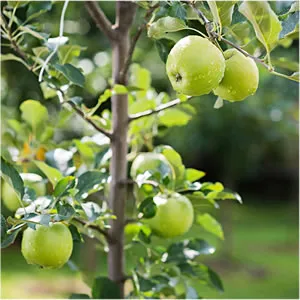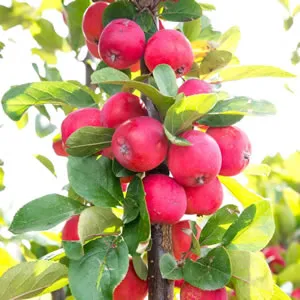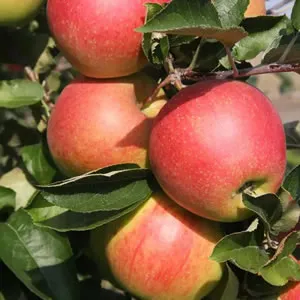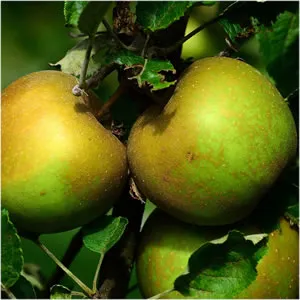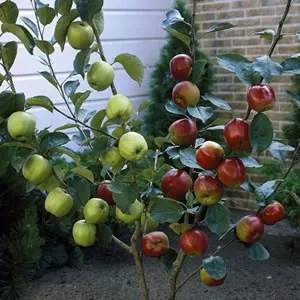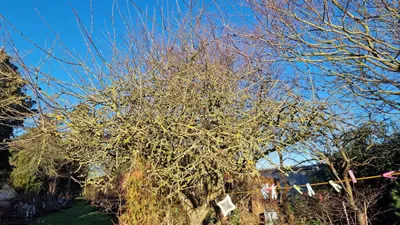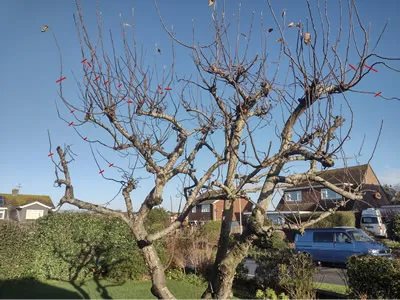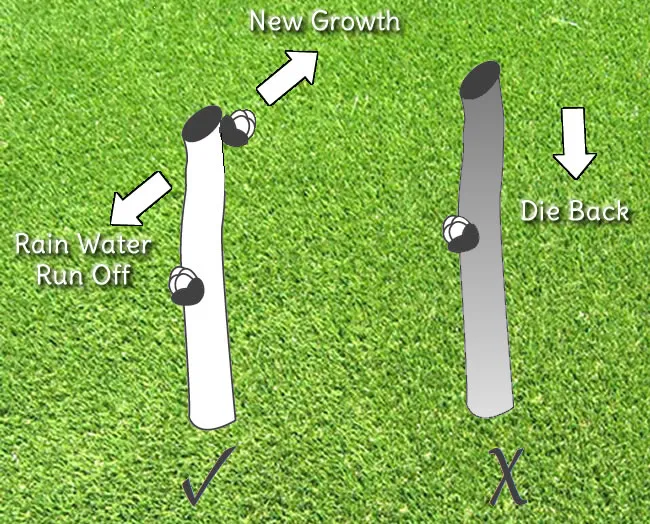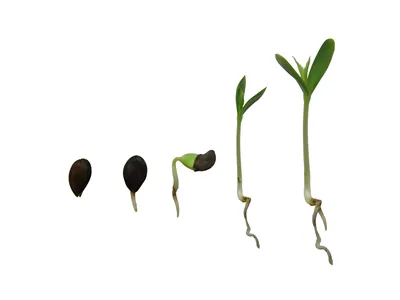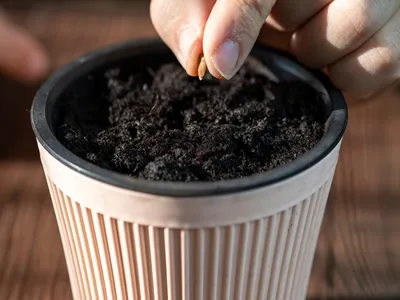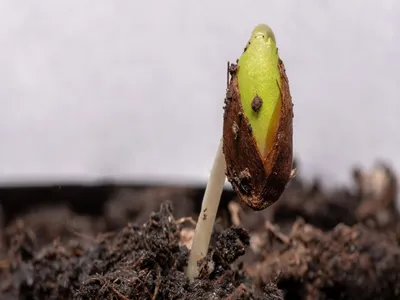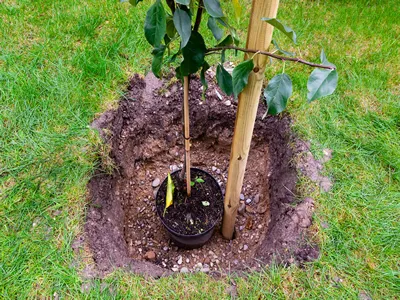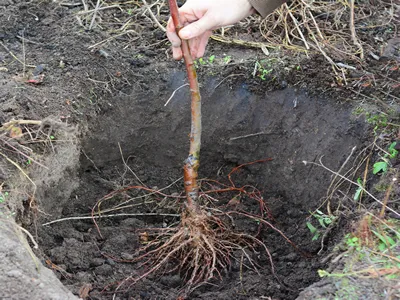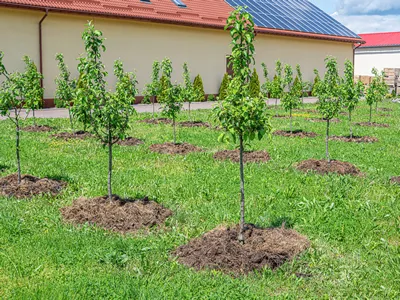How and When to Prune Apple Trees
An Overview of growing and maintaining Apple Trees in the UK
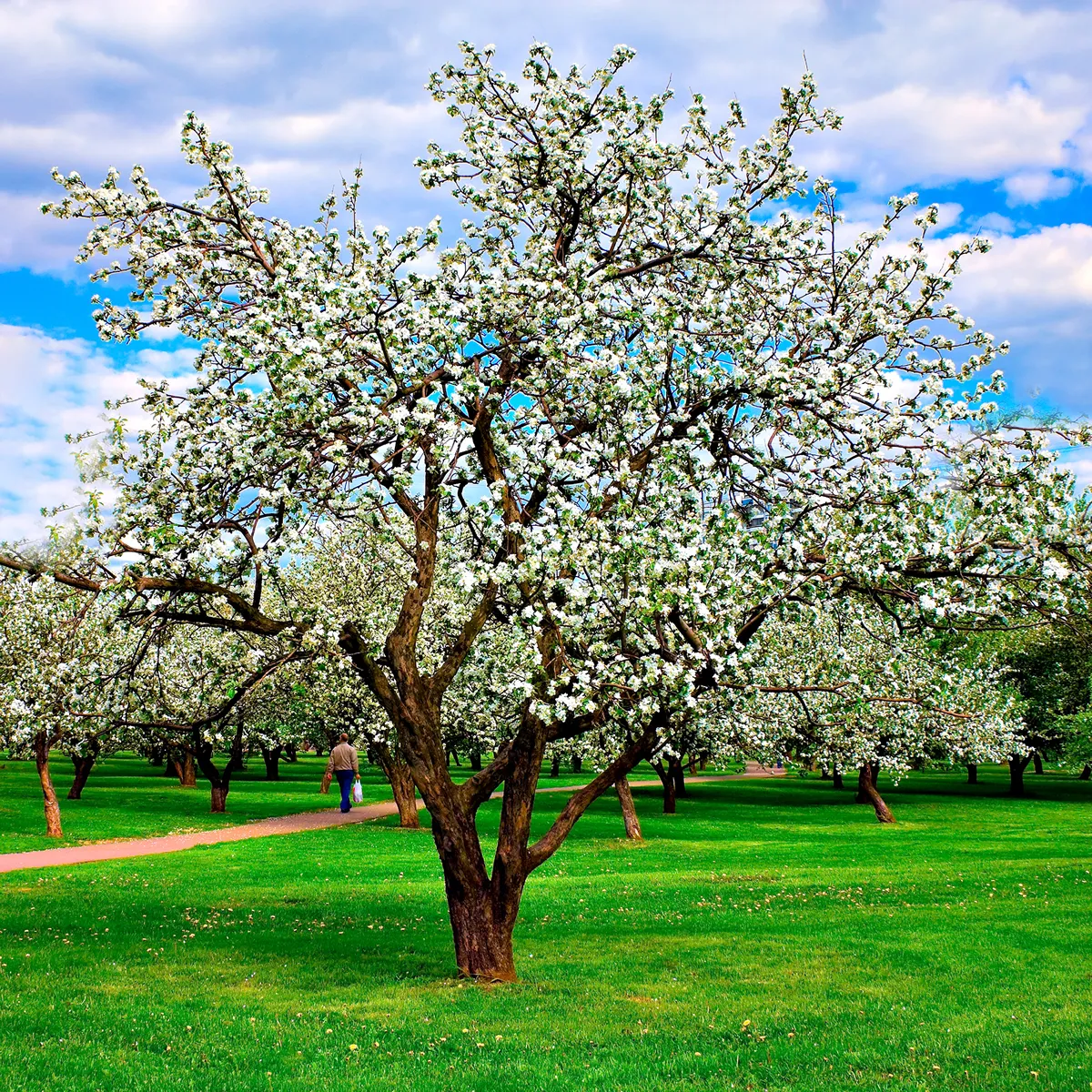
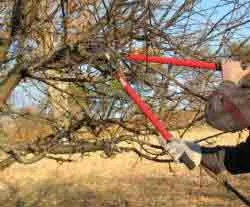
Gardening is an enjoyable pastime and apple trees are a great addition to any garden in the UK. Not only do they look aesthetically pleasing, they also produce sweet and delicious fruit when kept healthy! Growing these little gems can be made easier with proper pruning techniques; taking some time to learn how and when to prune your Apple tree will help ensure it stays strong, healthy and bearing fruit for a long life. In this blog post, we'll go through the basics of growing apples in the UK climate as well as tips on how best to keep them properly pruned for maximum yield. So let's dive into what you need to know about maintaining your apple trees!
Growing an apple tree in the United Kingdom is a great way to add beauty and deliciousness to your garden. Choosing the right type of soil, location, and size are all important factors when deciding how to successfully grow an apple tree.
When it comes to selecting the correct type of soil for an apple tree, it is best to choose a loamy or sandy soil that drains well and is rich in organic matter. Additionally, the soil should have a pH range between 6.0 and 7.0 for optimal results. When choosing the location for your apple tree, it is important to choose a spot that gets direct sunlight at least six hours of the day; however, make sure your chosen spot does not get too hot during midday as this can cause damage to your tree’s leaves. The ideal location should also be wind-protected since strong winds can easily move branches and potentially cause breakage or uprooting of roots.
The size of the apple tree you decide on also plays an important part when growing apples in the UK climate. Dwarf varieties are preferred as they are much easier to manage and do not require as much maintenance compared with larger trees; they also tend to be more disease resistant due to their smaller root systems. Furthermore, dwarf varieties produce substantially more fruit than larger trees due their compact size which allows them to contain more blossoms per branch!
Finally, timing is key when planting your apple tree - autumn is generally considered the best time of year for planting as this allows enough time before winter for roots establish themselves firmly in their new surroundings. Once planted, make sure you water regularly (especially during dry spells) as well as fertilize regularly according to instructions from your local gardening centre or nursery. With these simple steps plus regular pruning (as outlined earlier in this post), you can guarantee that you will have a bountiful harvest of apples each year!
How and When to Prune Apple Trees in the UK
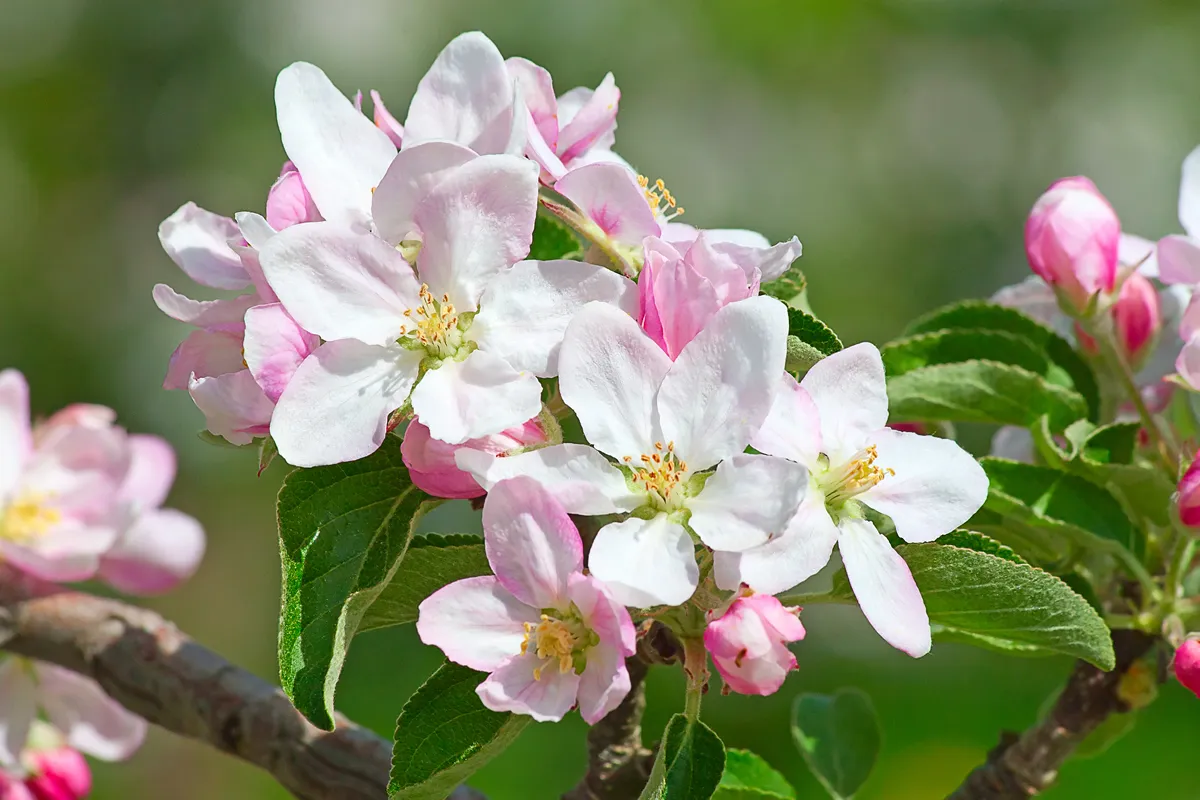
An Overview of growing and maintaining Apple Trees in the UK
Gardening is an enjoyable pastime and apple trees are a great addition to any garden in the UK. Not only do they look aesthetically pleasing, they also produce sweet and delicious fruit when kept healthy! Growing these little gems can be made easier with proper pruning techniques; taking some time to learn how and when to prune your Apple tree will help ensure it stays strong, healthy and bearing fruit for a long life.
In this blog post, we'll go through the basics of growing apples in the UK climate as well as tips on how best to keep them properly pruned for maximum yield. So let's dive into what you need to know about maintaining your apple trees!
Types of Apple Tree, Cooking, Desert, Cider Apples

Apples come in a wide variety of shapes and sizes, and there are many types of apple trees to choose from for your gardening endeavors. Depending on your desired use - whether it be for cooking, making deserts or cider - there is an apple tree tailored to that specific need. Those seeking apples for culinary purposes may want a cooking apple, often described as tart with firm flesh and skin that can be cooked down into sauce or pies. Meanwhile, those entertaining the idea of creating their own apple-based desserts will be happy to know that softer, sweeter apples exist that work great in crumbles or cobblers.
And finally, for those looking to achieve an adult beverage, cider apples are a special breed that are sweet yet hardy with tannins designed to sharpen the flavor of your future alcoholic drink. No matter what you're searching for, there's an apple tree ready to meet all your needs!
The Common Problems and Pests which effect Apple Trees
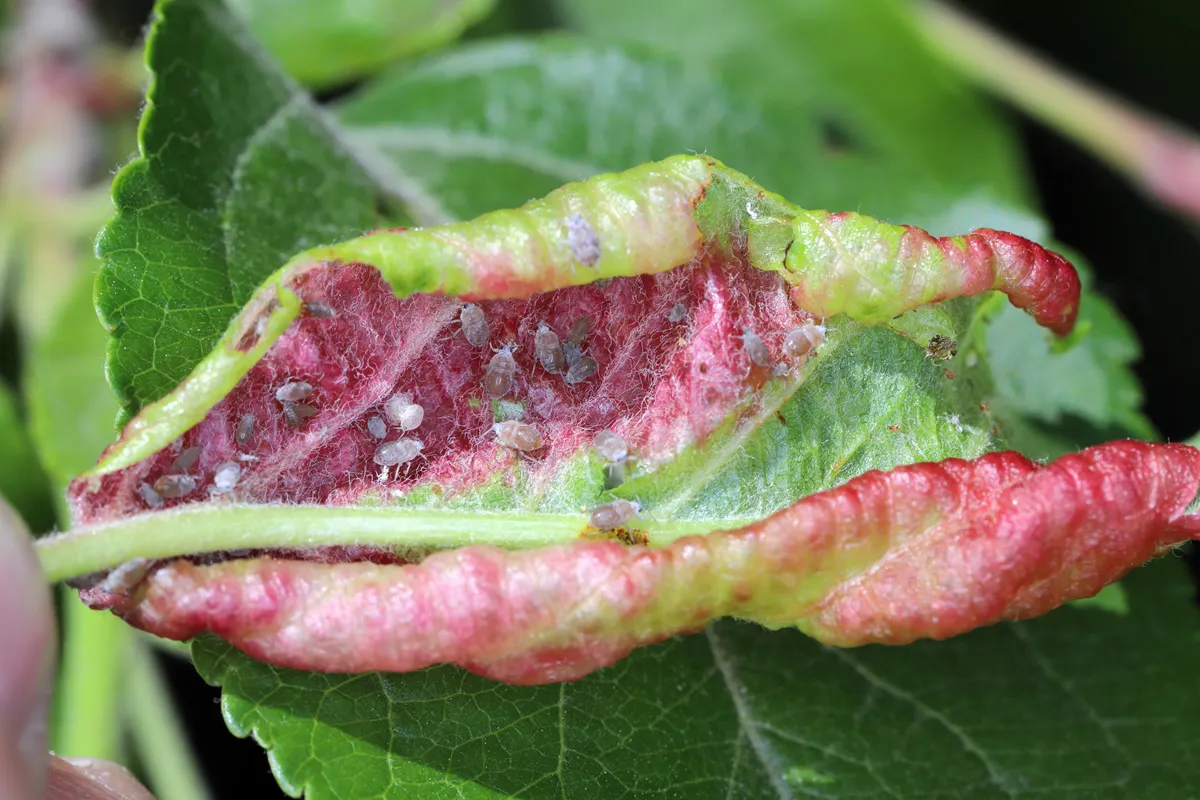
Gardening is a great way to get outdoors, get creative, and enjoy watching something that you have worked hard on grow. One of the most popular flowering or fruiting trees grown in gardens is the apple tree, however even with its popularity it does not escape the common pests and problems which plague other plants too. Coddling moths, Aphids, Fire Blight, scale insects and Apple Scab are some of the more common pest and problems faced when growing an apple tree. Thankfully there are many treatments available from organic pesticides to pruning techniques which can help protect your apple tree.
Coddling moths, also known as the Carpocapsa pomonella, are a species of moth that lay their eggs on apples, causing them to become coddled. The larvae feed on the flesh of apples and can cause them to be misshapen or destroyed completely. The adult moths can also spread viruses and fungi between apple trees, impacting their yields. To stop the spread of coddling moths, pruning and pesticides can be used to get rid of both the moths and larvae.
Aphids are small, soft-bodied insects that feed on the leaves and stems of apple trees. They secrete honeydew as they eat, which encourages fungal growth in apple trees. Aphids can also transmit virus diseases from tree to tree. Pesticides can be used to eradicate Aphids from apple trees, but for best results pruning should be done during the dormant season when fewer Aphids are present.
Fire Blight is a bacterial disease caused by Erwinia amylovora and primarily affects apple and pear trees. Symptoms include blossom blighting, leaf scorch and stem cankers. Fire Blight is difficult to control once it has infected a tree as chemical treatments may not be effective against such a strain of bacteria in all cases. Pruning off diseased branches is recommended for controlling Fire Blight before it spreads throughout an entire tree or grove of apple trees.
scale insects are small oval-shaped pests that attach themselves to the branches of apple trees and feed off the sap within them; they form white fuzzy patches near vein axils on leaves or brown spots on buds and twigs. scale insects may also spread fungi among different fruit trees if not treated in time with horticultural oil or other insecticides specifically designed for scale infestations on woody plants like apple trees.
Apple Scab is a fungal disease caused by Venturia inaequalis which mainly attacks young leaves, flowers and fruits of various species including apples, crabapples and pears; symptoms include olive green lesions that gradually darken into velvety black areas with yellow-orange borders which then become covered in brown spots over time before falling off prematurely from fruits or leaves turning yellowish brown around their edges before finally dropping off too early for harvest season. Apple Scab can be managed through using fungicides during springtime as well as improving air circulation around plants by pruning away any overcrowded branches
Our guide and list of the most popular UK apple varieties
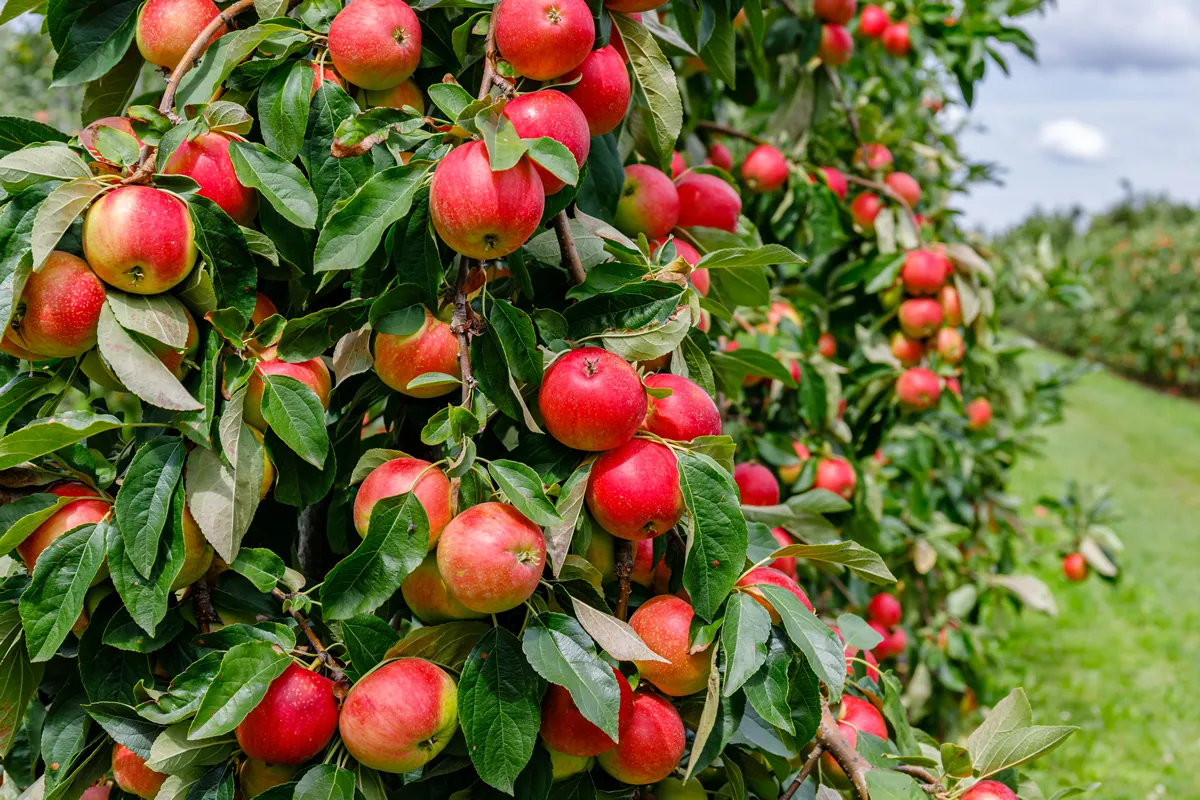
With a long history of apple cultivation and admired for their wide range of cultivars, the UK has become synonymous with delicious apples. Requiring specific climatic conditions as well as soil fertility and pollination in order to thrive, many of the most popular varieties found today were crafted through centuries of careful selection by British fruit growers.
Our guide lists the most popular UK apple varieties, from the classic Golden Delicious and crisp Granny Smith to the tart Bramley and sweet-flavored Gala apples. Whatever your preference, you're sure to find something that will tantalize your taste buds!
Dessert apples, cooking apples, and cider apples each have characteristics that make them suited to their specific uses.
- Dessert Apples: Also known as eating apples, these are typically sweet with a crisp texture. They are bred for their flavor and are perfect for eating fresh out of hand. Examples include Cox's Orange Pippin, Gala, and Pink Lady.
- Cooking Apples: These are generally larger and can be tarter than dessert varieties. Some varieties have a firm flesh that does not break down much when cooked, making them ideal for pies, crumbles, or sauces. The tartness mellows upon cooking and can provide a good balance to the sweetness of a dish. Bramleys are a common example of cooking apples in the UK.
- Cider Apples: These apples are specifically grown for making cider. They tend to be more tart and a little less sweet than dessert apple varieties. Cider apples are often higher in tannins and acidity which contribute to the complexity of flavors in cider. Cider makers will often mix varieties to achieve the desired balance of sweetness, bitterness, and acidity. Dabinett and Yarlington Mill are examples of cider apples.
It's worth noting that while these categories exist, many apple varieties can be used in multiple ways. For instance, some dessert apples can be used in cooking, and many types of apples can be used to make cider. The choice of apple can greatly affect the taste of the final product, whether it's a pie, a fresh apple, or a glass of cider.
Cooking Apples
- Nonpareil
- Winter Pomeroy
- The Harvey
- Golden Pippin
- Winter Pearmain
- Crab apple
- Grenadier
- Lord Derby
- Howgate Wonder
- Granny Smith Apples
- Fuji Apples
- Winesap Apples
- Honeycrisp Apples
- Calville Blanc D'Hivers Apples
- Jonamac Apples
- Gala Apples
- Cortland Apples
- Worcester Pearmain
- Lord Lambourne
- Egremont Russet
- Cox
- Bramley
Desert Apples
- M. domestica 'Scrumptious'
- M. domestica 'Discovery'
- M. domestica 'Howgate Wonder'
- Nonpareil
- Winter Pomeroy
- The Harvey
- Golden Pippin
- Winter Pearmain
- Grenadier Apples
- Armagh Bramley Apples
- Knobby Russet
- Discovery Apples
- Blenheim Orange Apples
- Kingston Black
- Dabinett
- Cox's Orange Pippin
- Gala Apple - Sometimes known as Royal Gala
- Pink Lady
- Egremont Russet
- Worcester Pearmain
- Lord Lambourne
- Cox
Cider Apples
- Dabinett
- Ellis Bitters
- Harry Masters
- Ashton Bitters
- Three Counties
- Yarlington Mill
- Michelin
- Bulmer's Norman
- Chisel Jersey
- Cortland
- Cap of Liberty
- Collaos
- Domaines
- Dolgo
- Foxwhelp
- Golden Hornet
- Mettais
- Porter's Perfection
- Stembridge Cluster
- Stoke Red
- Kingston Black
- Somerset Redstreak
- Browns Apple
Best apple trees to grow in uk
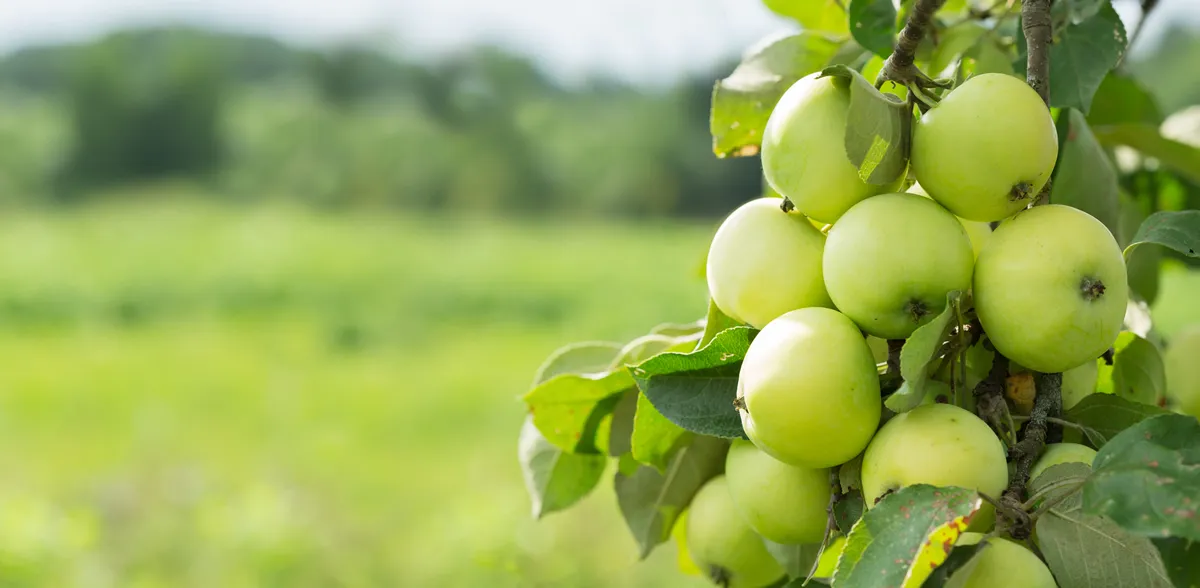
If you're a gardener living in the UK, you may be interested in planting some apple trees. There are many apple trees suitable for British climate and soil conditions, with well known favourites such as Bramley's seedling and Cox's Orange Pippin providing a hearty crop of delicious fruit. For those looking for something a bit more eccentric, there's also the delicate but delicious Blenheim Orange or the late ripening Fiesta trees - perfect for making winter desserts! Whatever your garden needs, there is an apple tree to suit you!
Here is a list of the best apple trees to grow in the UK:
- Bramley's Seedling – an old favorite for pies and cooking, this variety has a sharp, tart taste and is easy to grow.
- Cox's Orange Pippin – with a sweet-tart flavor this apple is perfect for eating raw or baking.
- Redlove Era – produces large, deep red apples which can be eaten fresh or used to make juice and cider.
- Laxton’s Superb – early ripening season with a sweet-tart flavor; great for fresh eating and makes a delicious jelly too.
- Jamaica Nonpareil – medium sized apples that have a very sweet taste when ripe; excellent for making desserts as well as eating raw.
- Red Falstaff – popular red apple with good disease resistance; crisp texture and tart flavor make it ideal for salads and pies alike.
Bramley's Seedling is an old favorite for pies and cooking, with a sharp, tart taste that makes it perfect for baking. It is easy to grow and ripens early in the season. The medium-sized apple has good disease resistance and can be eaten fresh or used to make juices, cider and desserts. It also makes a delicious jelly.
The apple tree maintenance calendar
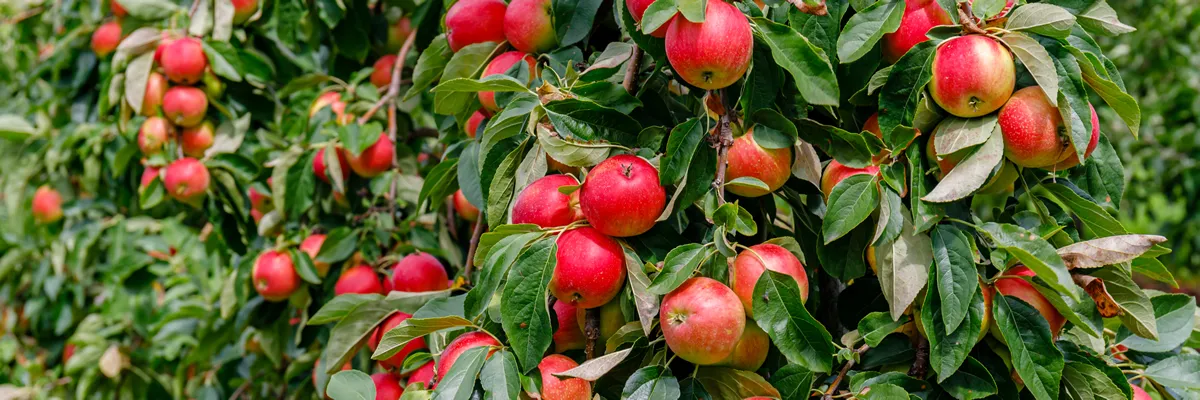
The apple tree maintenance calendar is an essential tool for gardeners and apple growers alike. It provides guidance on the steps to take throughout the year to ensure the health of your tree. This can include pruning, fertilizing, pest management, and other preventative maintenance that can set your tree up for success come apple season. If you’re serious about getting the most out of your apple tree, make sure you always refer back to it as part of your gardening routine. It will keep your tree healthy and its bounty sweet!
The apple tree is a beloved fruit tree that provides delicious treats throughout the year in the United Kingdom. Although it’s relatively easy to maintain, any gardener who wants optimal yields should have a maintenance calendar to ensure the proper care of their tree.
Throughout the seasons, there are several crucial steps for apple tree maintenance that should be followed. In early spring, before the buds start to open and blossom, pruning should be done to remove deadwood and branches as well as shape the canopy of the tree. This will help direct growth towards desired areas and can help with problems such as overcrowding or limbs rubbing against each other. Additionally, applying fertilizers or composts at this time of year will provide essential nutrients for your tree’s health.
During summer months, gardeners should be on alert for pests such as Aphids which can damage leaves and buds if left unchecked. Insecticidal sprays can discourage these pests while encouraging beneficial insects like bees that aid pollination. Depending on region and variety of apple trees, thinning out fruit can also be necessary during this season; while apples may look plentiful, it is important to keep numbers reasonable so that individual fruits can reach full size without competing too much with others nearby.
To prepare for winter, make sure your apple trees are properly stored away from harsh weather conditions; mulching around the base of your tree will keep its roots safe from frost while providing additional nutrients come springtime. Additionally, spraying a dormant oil after leaf drop helps protect against diseases over winter and helps prepare for another successful growing season in Spring!
In conclusion, having a regular maintenance checklist for apple trees is essential in ensuring its vitality and future bounty! Pruning in early spring provides structure and encourages new growth; pest control keeps away harmful insects throughout summer; thinning out fruit ensures each one reaches full size; and protecting it from cold temperatures with mulch or spray ensures longevity over winter months so you can enjoy more apples every year!An Overview of growing and maintaining Apple Trees in the UK
Best apple trees for small gardens uk
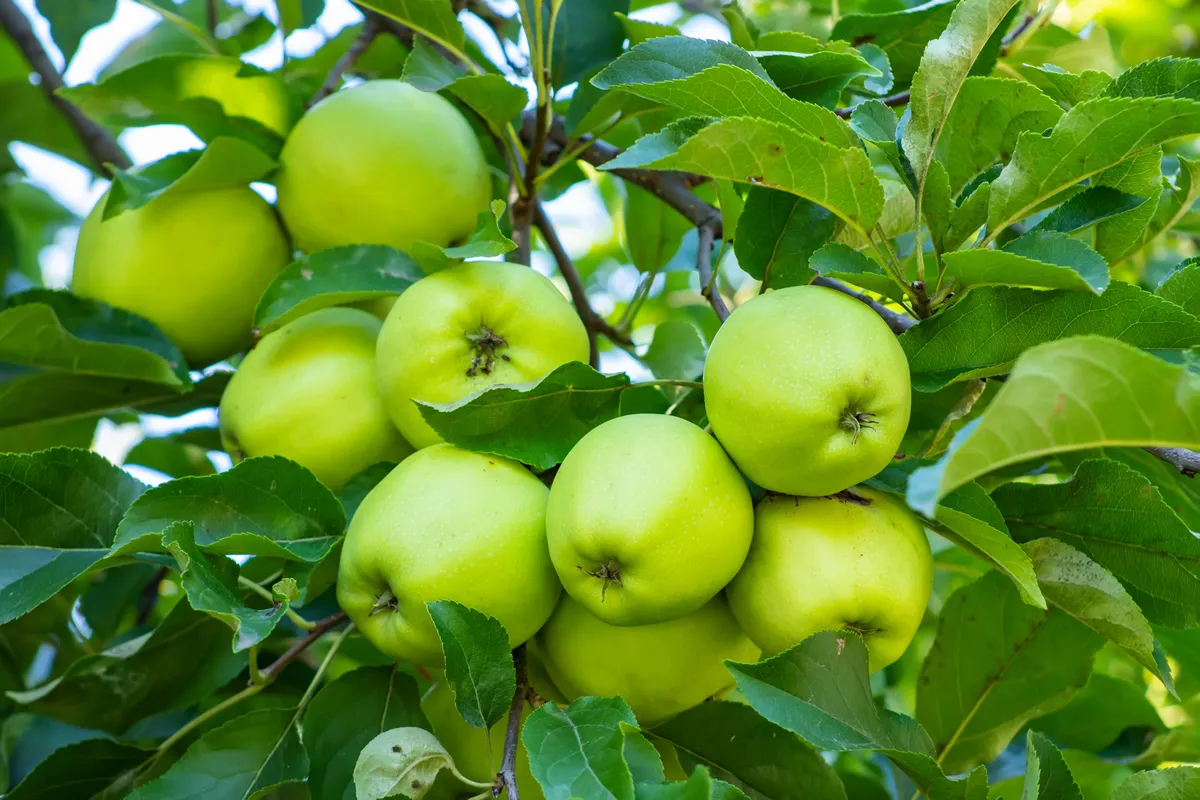
Gardening in a small space can present its own unique set of challenges, but choosing the right type of apple tree can help minimise those issues. For small gardens or yards in the UK, some great options include Discovery, Bramley’s Seedling, Redsleeves and Red Falstaff. All of these apples trees are smaller varieties meaning they are great choices when limited space is an issue. They also produce wonderful tasting apples allowing you to reap the benefits of gardening no matter how much space you have available. With careful selection and regular maintenance, it is possible to enjoy a bountiful harvest from even the smallest of gardens.
For small gardens in the UK, there are a few apple tree varieties that are particularly suitable due to their compact growing habits and good yield in smaller spaces:
- Red Falstaff: This is a modern variety that's easy to grow and produces heavy crops of juicy, sweet apples. It's also disease-resistant, making it a low-maintenance choice.
- Herefordshire Russet: This variety offers a traditional Victorian apple experience with a modern twist. The apples have a unique, nutty flavor and the tree is compact enough for small gardens.
- Cox's Orange Pippin: A classic British apple, this tree is well-suited to the UK climate and its medium size makes it a good fit for smaller gardens. It's known for its delicious, aromatic fruit.
- Egremont Russet: This tree is compact and produces a reliable crop of rich, sweet apples. It's also hardy and disease-resistant.
- James Grieve: This is an excellent dual-purpose apple, good for both eating and cooking. The tree is compact, hardy, and easy to grow.
- Spartan: This tree is perfect for small gardens due to its dwarf growth habit. It produces dark red, sweet, and juicy apples.
Remember to consider factors such as sunlight, soil quality, and local climate when choosing a variety for your garden.
At what age do Apple Trees bear fruit in the UK
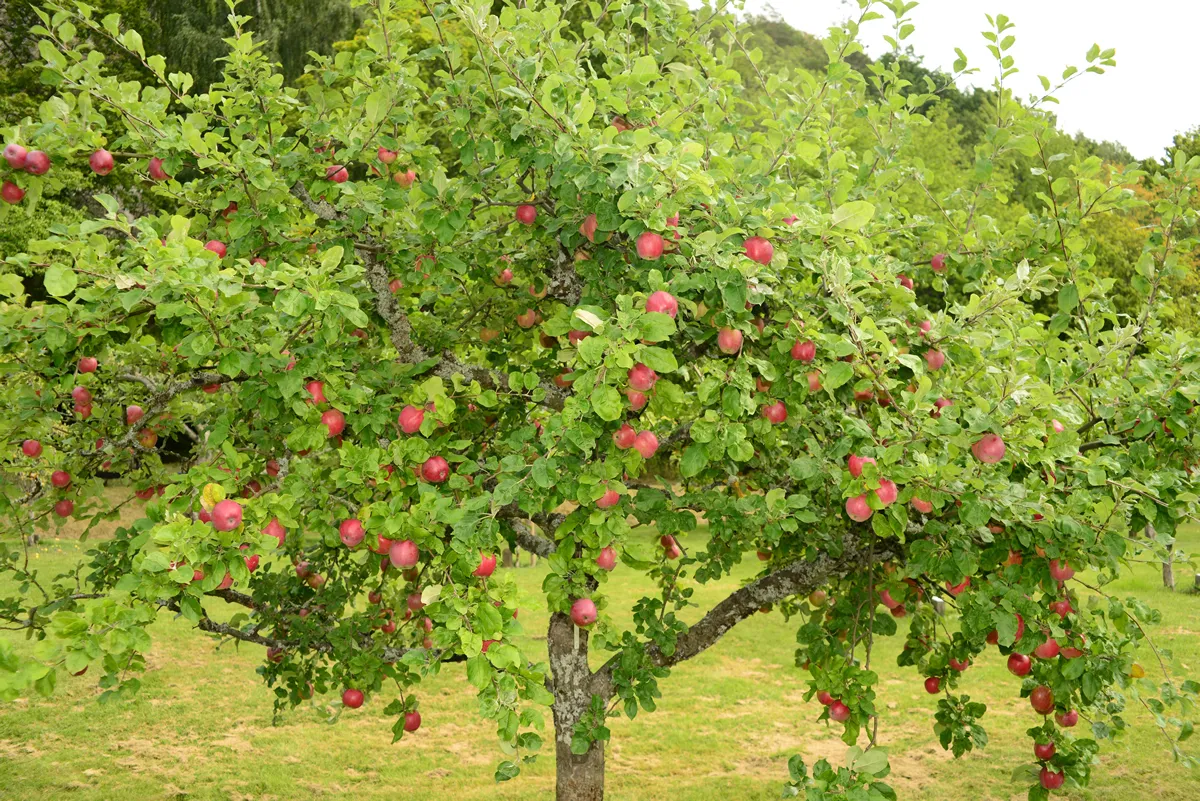
Apple trees are a great addition to any garden, providing both attractive foliage and delicious fruit. In the UK, apple trees generally begin to bear fruit within two or three years of planting.
The best results occur when two or more compatible varieties are planted together, so pollination can occur and a larger crop of apples is produced. Bearing in mind that each variety has its own maturity rate, typically between late August and October has been considered the ideal time for harvesting in the UK. With high quality care throughout their lifecycle, apple trees can bear apples for many years to come!
If your apple tree stops bearing fruit, there could be several reasons behind it and various steps you can take to address the issue:
- Age: Apple trees must reach a certain maturity before they start producing fruit. Typically, apple trees start fruiting between 2 to 5 years after planting, depending on the type and rootstock.
- Lack of Pollination: Apple trees need pollinators like bees or other insects to carry pollen from one flower to another. If there's a lack of pollinators or if the weather during flowering season is particularly cold or rainy, the flowers may not get pollinated, resulting in no fruit.
- Pruning: Regular pruning helps to encourage fruit production by allowing more light into the canopy of the tree. However, over-pruning can reduce the tree's ability to bear fruit. It's recommended to prune apple trees in late winter or early spring.
- Biennial Bearing: Some apple trees naturally produce fruit every other year in a cycle known as biennial bearing. This can be managed through thinning the fruit in a heavy crop year to promote yearly fruiting.
- Disease or Pests: Disease or pests can impact an apple tree's ability to bear fruit. Regularly check your tree for signs of disease or pest activity, and treat any problems as soon as they're identified.
- Nutrient Deficiency: Apple trees need a balance of nutrients to produce fruit. A lack of necessary nutrients can result in poor fruiting. Regular soil tests can help identify any nutrient deficiencies so you can amend the soil accordingly.
- Weather Conditions: Frost during the flowering period can kill the blossoms, while drought can stress the tree and affect fruit production. Provide adequate water during dry periods and consider frost protection methods if late frosts are common in your area.
If you've addressed these issues and your apple tree is still not bearing fruit, it might be worth consulting with a local extension service or arborist for further guidance.
How and When to Prune Apple Trees in the UK
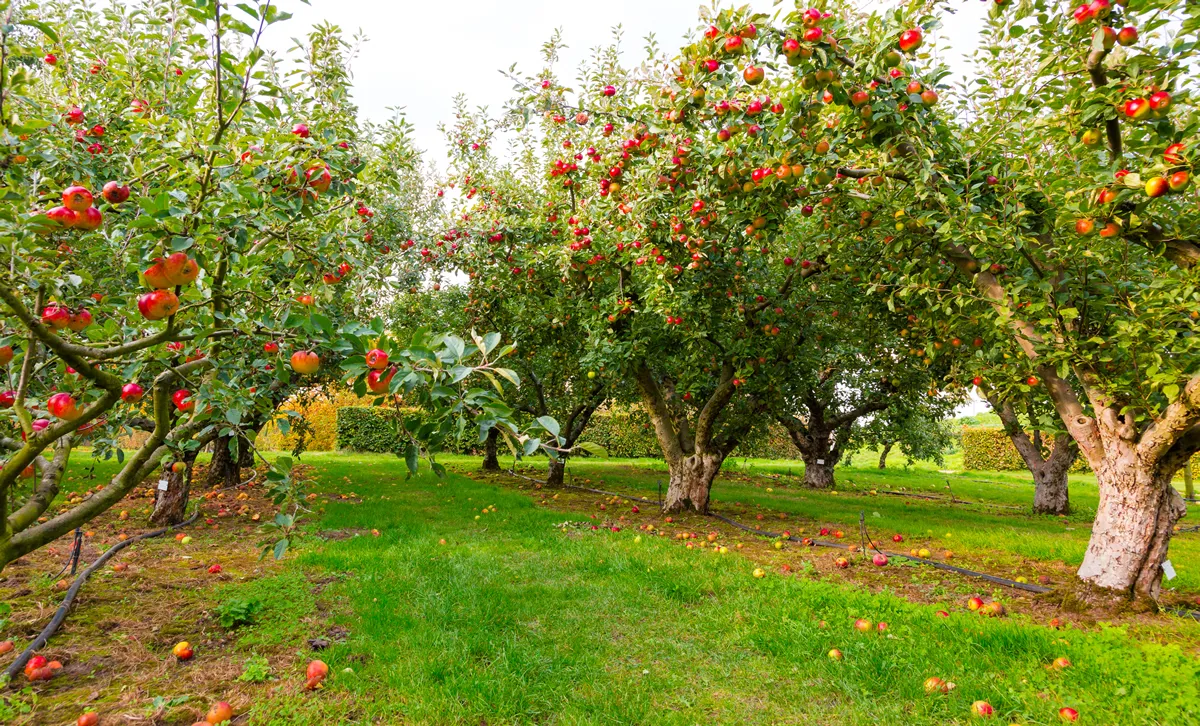
If you're a UK gardener lucky enough to have an apple tree in your yard, chances are you want it to remain healthy and productive for as long as possible. Pruning is the key to achieving this desired outcome - but there's more to it than simply taking out the dead branches. Mastering how and when to prune your apple trees correctly can mean the difference between success and failure; luckily, we’re here with all of the information you need! Let’s get started by learning why pruning is so important for fruit trees.
Identifying the Type of Apple Tree
The first step towards pruning an apple tree is identifying its type. Apple trees are typically classified into three categories based on their size: dwarf, semi-dwarf, and standard.
- Dwarf apple trees are the smallest, usually growing up to 3 meters in height.
- Semi-dwarf apple trees are slightly larger, reaching heights of 4 to 5 meters.
- Standard apple trees are the largest, often growing over 6 meters tall.
Knowing the tree's category will help determine the appropriate pruning strategy, as each size requires slightly different techniques.
Required Tools for Pruning
Before you begin pruning, gather all necessary tools. This includes:
- A pair of sharp secateurs for small branches (less than 1.5cm diameter)
- Loppers for medium-sized branches (1.5cm to 3cm diameter)
- A pruning saw for large branches (more than 3cm diameter)
- A ladder for reaching higher branches (if dealing with a standard or semi-dwarf tree)
- Protective gloves and safety glasses
Make sure your tools are clean and sharp to ensure clean cuts and prevent disease spread.
When to Prune
In the UK, the best time to prune apple trees is usually late winter or early spring (February or March). This is when the tree is still dormant but approaching the growing season, reducing the risk of cold damage yet allowing the tree to heal quickly.
However, timing can also depend on the type of apple tree:
Dwarf apple trees often require less pruning and can be pruned in late winter to early spring. Semi-dwarf and standard apple trees usually require more extensive pruning, which should be done in late winter.
Preparing the Apple Tree for Pruning
Before you start pruning, take a good look at your apple tree. Identify any dead, diseased, or damaged branches; these should be removed first for the health of the tree. Also, look for branches that cross each other or grow inward towards the trunk, as these can create crowded conditions that hinder growth.
Pruning Process
Start by removing all dead, diseased, or damaged wood. Cut back to healthy wood, visible by its green color when lightly scraped with a knife. Next, remove any crossing or inward-growing branches to open up the tree's structure and allow light and air to circulate.
After this, apply these techniques:
- Heading Back: Cut back the tips of branches to encourage bushier growth. Make your cut just above a bud that's facing in the direction you want the new growth to go.
- Thinning Out: Remove some branches entirely to reduce crowding and improve light penetration. Always cut back to a main stem or branch to maintain a natural appearance.
- Shaping: Trim the tree to maintain its overall shape and balance. Dwarf and semi-dwarf trees should maintain a more rounded shape, while standard trees are typically pruned to a central leader or modified central leader shape.
Aftercare
After pruning, care for your apple tree by watering it thoroughly and applying a balanced fertilizer to support recovery. Keep an eye out for signs of disease or pests, and treat any issues promptly to keep your tree healthy.
Remember, pruning is as much an art as it is a science. Every tree is unique, and you'll need to adjust these guidelines to suit your specific situation. Don't be afraid to learn as you go and seek advice from local horticulture experts or resources for additional guidance.
Understanding the Basics of Pruning Apple Trees
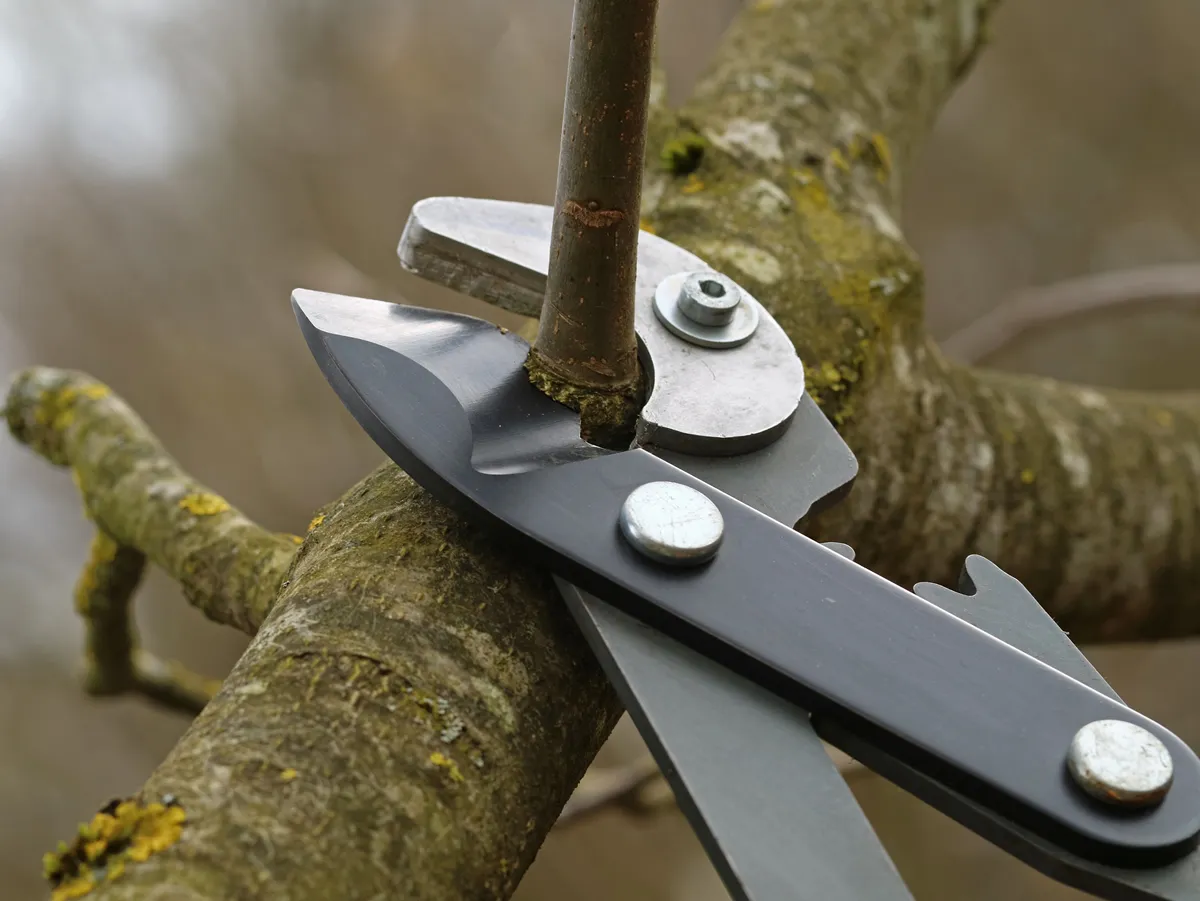
Gardening can be a rewarding pastime, and understanding the basics of pruning apple trees is essential for any budding horticulturist. Pruning involves selectively removing parts of the tree like branches and twigs, in a way that encourages healthy growth. It helps create an aesthetically pleasing shape and structure, as well as promoting better yields during the harvest season.
In addition, pruning eliminates dead or dying branches from the tree, which is important for disease prevention. With these simple tips in mind, you're ready to get out there and start gardening!
Pruning an apple tree regularly not only helps in maintaining its shape but also encourages healthy growth and fruit production. Here's a step-by-step guide on how to do it:
- Step 1: Identify the Right Time to Prune The ideal time to prune apple trees is late winter or early spring, just before new growth starts but after the coldest weather has passed. This generally allows wounds to heal quickly and reduces the risk of disease.
- Step 2: Gather Your Tools You'll need a pair of sharp secateurs for small branches, loppers for medium-sized branches, and a pruning saw for larger ones. A ladder may be necessary for taller trees. Always ensure your tools are clean and sharp to prevent the spread of disease and ensure clean cuts.
- Step 3: Assess Your Tree Before you start pruning, take a good look at your tree. Identify dead, diseased, or damaged branches, as these should be pruned first. Also, look out for any branches that are crossing each other or growing inward toward the trunk, as they can hinder proper growth and airflow.
- Step 4: Start with Dead, Diseased, or Damaged Wood Begin your pruning process by removing all dead, diseased, or damaged branches. Make your cuts at a downward angle, close to the branch collar (the swollen area where the branch connects to the trunk or a larger branch), but don't cut into it.
- Step 5: Remove Crossing or Inward-Growing Branches Next, cut away any branches that are crossing each other or growing inward. This opens up the tree's structure, allowing better light penetration and air circulation, which are essential for healthy growth and fruit production.
- Step 6: Thin Out the Crown Remove some of the branches from the crown of the tree to reduce crowding. This allows more light to reach the inner part of the tree, encouraging better fruit production.
- Step 7: Shorten Remaining Branches Once you've thinned out the tree, shorten the remaining branches. This encourages the tree to grow more branches and thus produce more fruit. Make sure to cut just above an outward-facing bud to encourage growth in that direction.
- Step 8: Clean Up and Monitor After pruning, clean up all the cut branches and dispose of them properly, especially if they were diseased. Keep an eye on your tree throughout the growing season for signs of disease or pests, and be ready to treat as necessary.
Remember, it's better to under-prune than over-prune. You can always cut more later, but you can't put a branch back once it's been cut off. If you're unsure about something, it's best to seek advice from a local extension service or a professional arborist.
Choosing the Right Tool for the Job
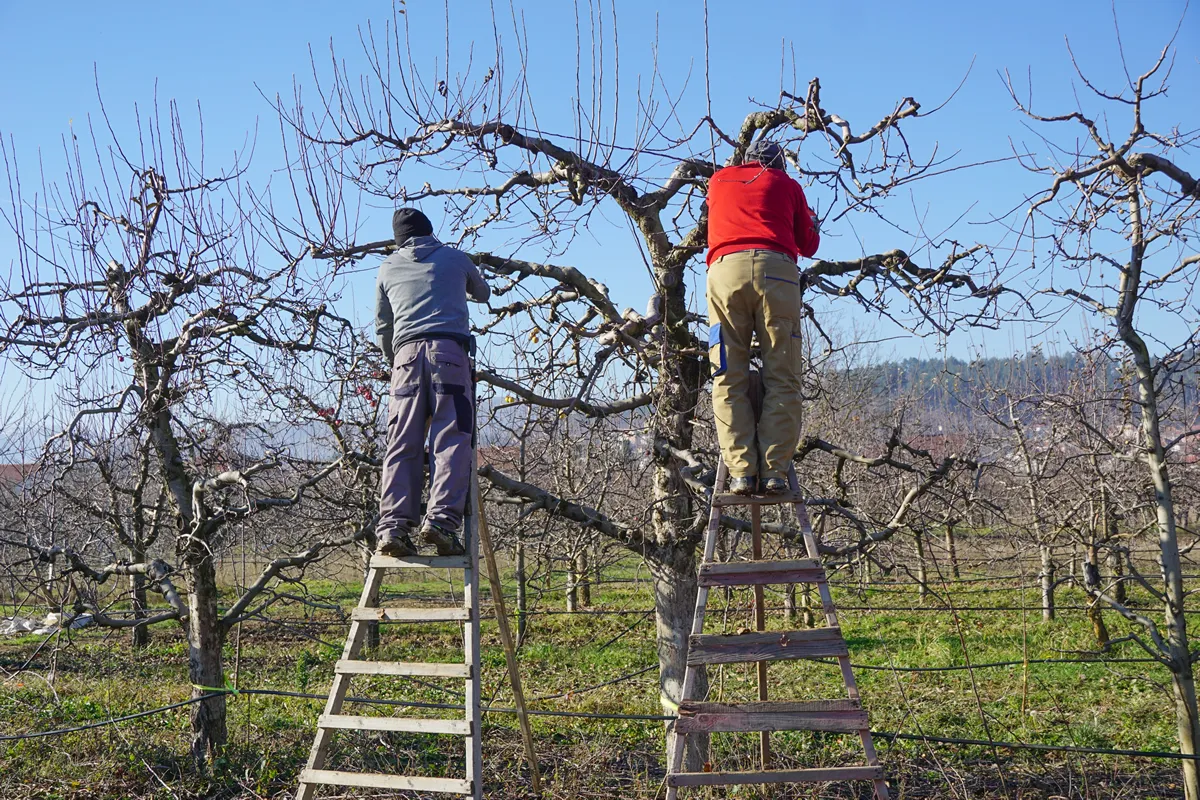
Having the right tools to perform different tasks can make all the difference in the quality of your work. This is especially important when it comes to gardening and taking care of trees. For example, if you are pruning a tree, the type of saw or shears you choose will determine how easy or difficult the job is.
A pruning saw with a curved blade is great for larger branches, but a trimming shear is better for smaller branches. Furthermore, if you use a tool that isn't designed specifically for gardening, not only will it be inefficient, but it also may cause damage to your plants or trees. Therefore, taking time to select the right tool for the job will save you time and effort while ensuring that your gardening work looks professional.
Preparing Your Apple Tree for Pruning
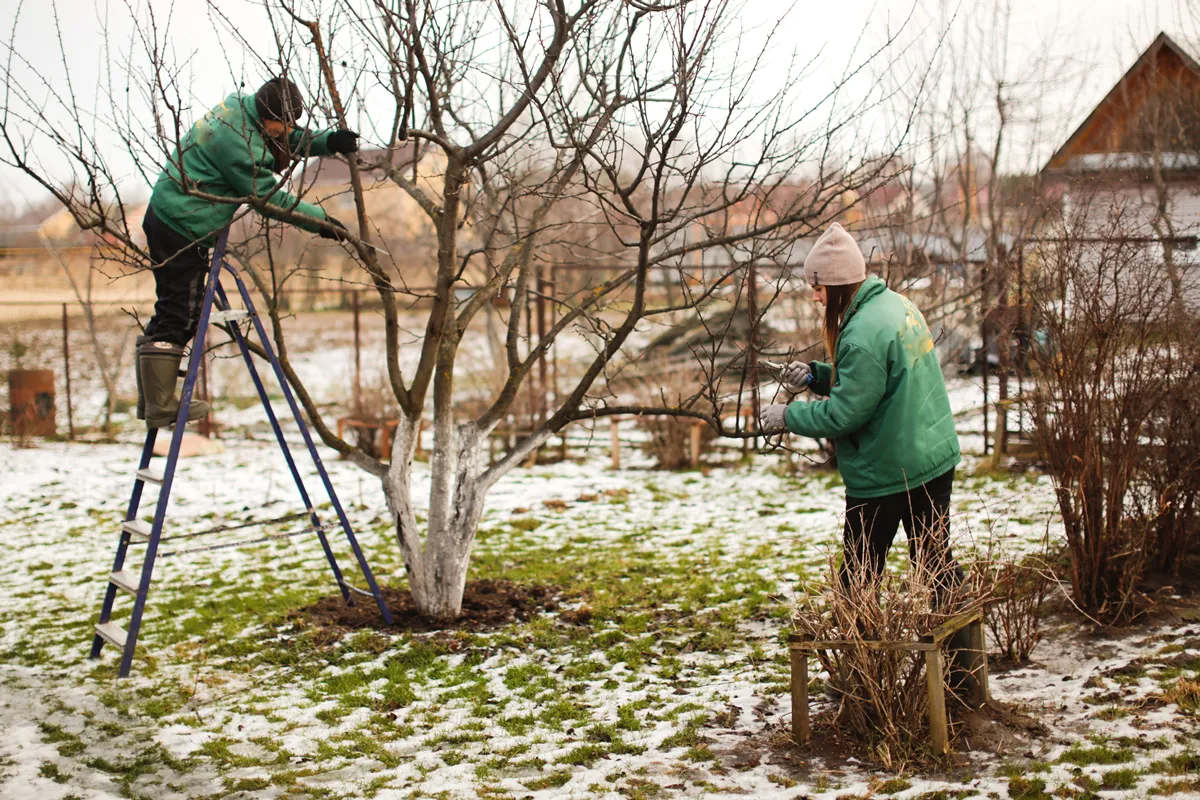
Pruning your apple tree is an important part of maintaining it. It's beneficial to both the look and health of the tree and should be done on a yearly basis, although younger trees may require more frequent pruning. Before beginning, it's important to properly prepare for this task by surveying the tree and planning ahead.
Make sure you have the appropriate gardening tools for pruning, such as shears, loppers and saws. You'll also need knowledge about common pruning techniques as well as information about what parts of an apple tree can be safely pruned without damaging it. Doing some research beforehand will help ensure that you are adequately prepared and can confidently move forward with the task at hand.
When is the Best Time to Prune an Apple Tree in the UK
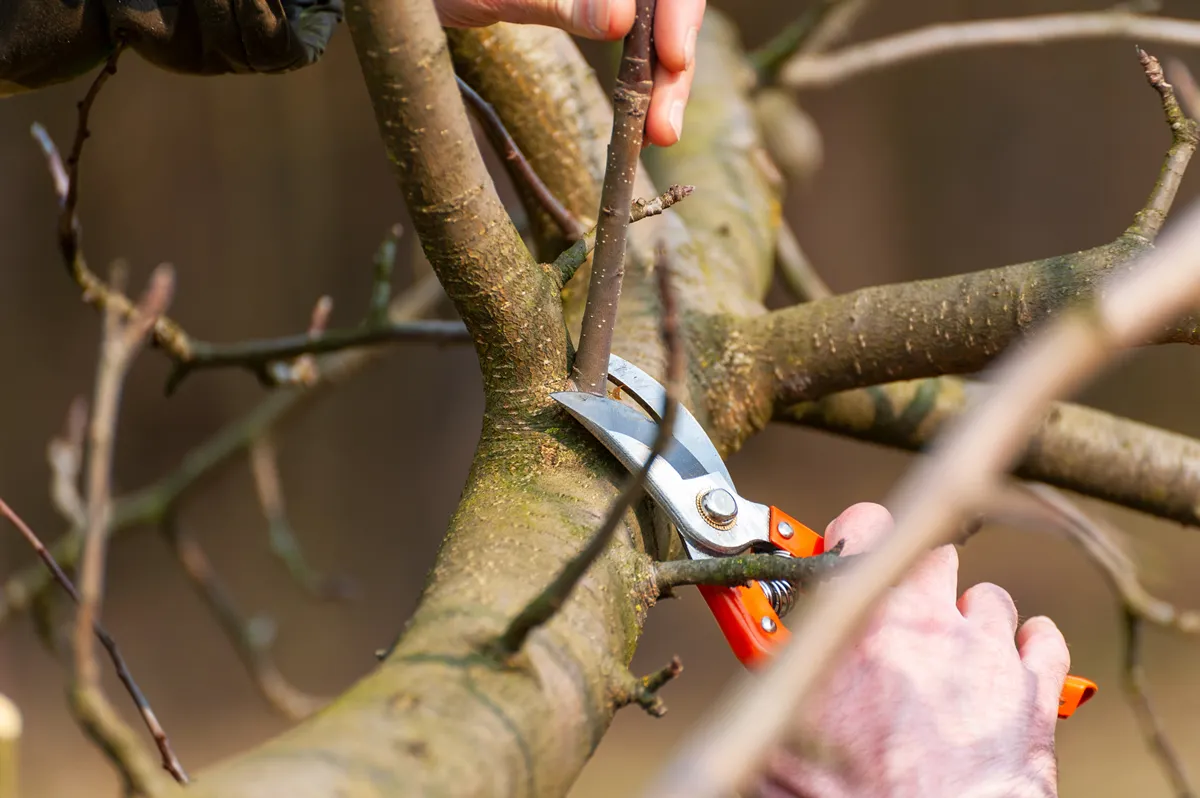
Pruning an apple tree can have many benefits to its structure and health, so it is important for gardening enthusiasts in the UK to know when the best time to do so is. Generally, the best time for pruning an apple tree in the UK is during winter, when trees are dormant and not actively producing fruits or leaves.
Pruning makes sure that a tree's structure remains as strong and healthy as possible, while getting rid of any unwanted growth or branches that may be weak or overcrowding other parts of the tree. Winter pruning also helps make sure that any pest damage is visible and can be addressed before it has a chance to spread.
By timing your pruning correctly, you will ensure that your apple trees remain healthy throughout the year!
The Different Pruning Techniques and What They Achieve
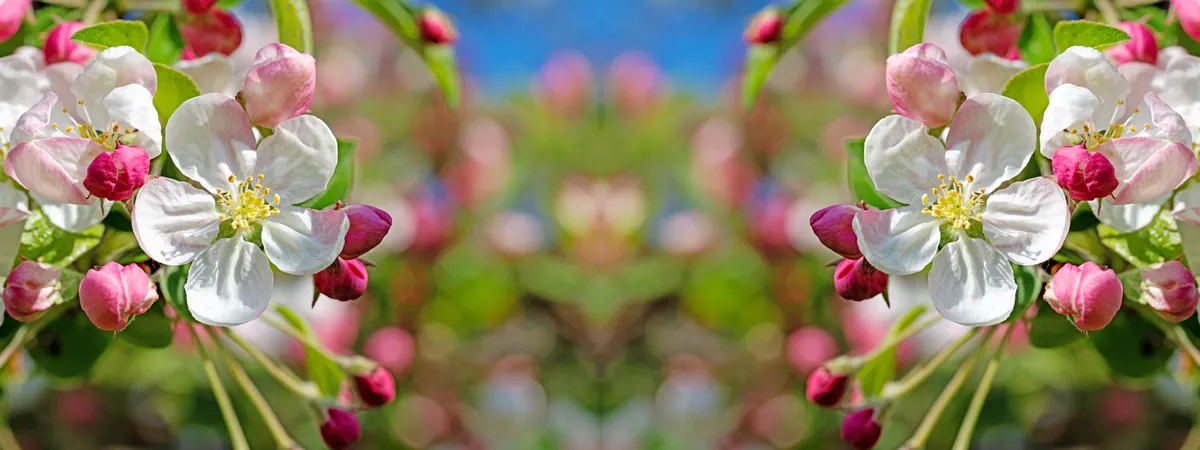
Pruning is an important part of gardening, and there are many different techniques you can use. A pruning guide can help to identify which type of pruning is best for each situation.
Crown thinning is a technique for removing some of the secondary and tertiary branches from a tree or shrub crown in order to improve circulation.
Skinning and southing removes surface roots that are visible above ground near the stem of the tree or shrub. Moving onto more drastic techniques, subheading involves cutting off all primary branches from a tree trunk, producing several main branches to create a smaller tree canopy. These various techniques all have their own purpose depending on the individual gardener's needs and preferences, but when done correctly, they bring about better airflow, sunlight penetration, and yield more attractive shapes in plants.
Summer and winter pruning of apple trees both have different results on the nature of the apple tree's future growth Pruning is an important part of gardening, especially when it comes to apple tree maintenance. Summer and winter pruning both help to achieve a desired shape and size of the tree, which can dictate its future growth.
Summer pruning encourages vegetative growth that will occur late in the season, while winter pruning focuses on the structural strength of the tree's branches. This dichotomy makes each season's pruning session unique, as the effects of seasonal pruning on apple trees could produce very different outcomes for their future growth.
Therefore, understanding how and when to properly prune your apple tree will result in healthy growth that can be enjoyed for years to come.
How to Prune Apple Trees in the Winter


1. An Overview of an Unpruned Apple Tree

2. An Overview of a Hard Pruned Apple Tree
Winter is a great time to prune apple trees. The cold air and dormant state of the trees allows gardeners to easily shape and maintain desired sizes of their apple trees. To properly prune an apple tree in the winter, it is important to first identify dead or damaged branches that need to be removed as well as determine any size constraints for the tree.
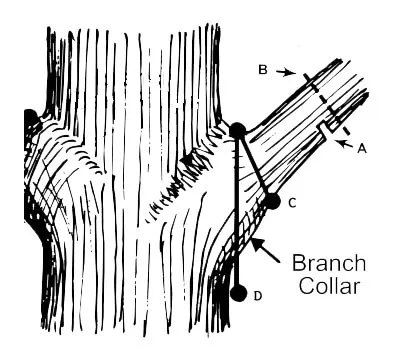
Hard pruning is also recommended during wintertime pruning, which involves removing overgrown branches from shrubs and trimming them down heavily. This technique should be done with caution and only used when soft pruning would not deliver satisfactory results. Doing so in the winter provides more favorable conditions than pruning during earlier months.
Winter is an ideal time to hard prune your Apple Tree, from the Images above, you can see we chose 4 branches and removed them. Look at your tree and assess which main branches can be removed. You need to achieve an aerated tree where non of the branches cross each other.
Making the Right Cut - Firstly make a small clean cut at "A", approximately 6 Inches away from the collar. Why, you ask? this is to stop the branch snapping away and splitting the branch when you make the second cut at "B". Make the second cut at "B", approximately 1 inch past "A". This is the job done for now.
Waiting 12 months and the "Die Back" should be evident and the stub should be discoloured (Dead) from the cut and heading towards "C". Finally make the final cut at "C", do not ever cut "D", this cut can and probably will Kill your Tree, so always cut across the collar.
If the branch is wide, you may wish to seal it with a specialist sealant.
How to Prune Apple Trees in the Summer
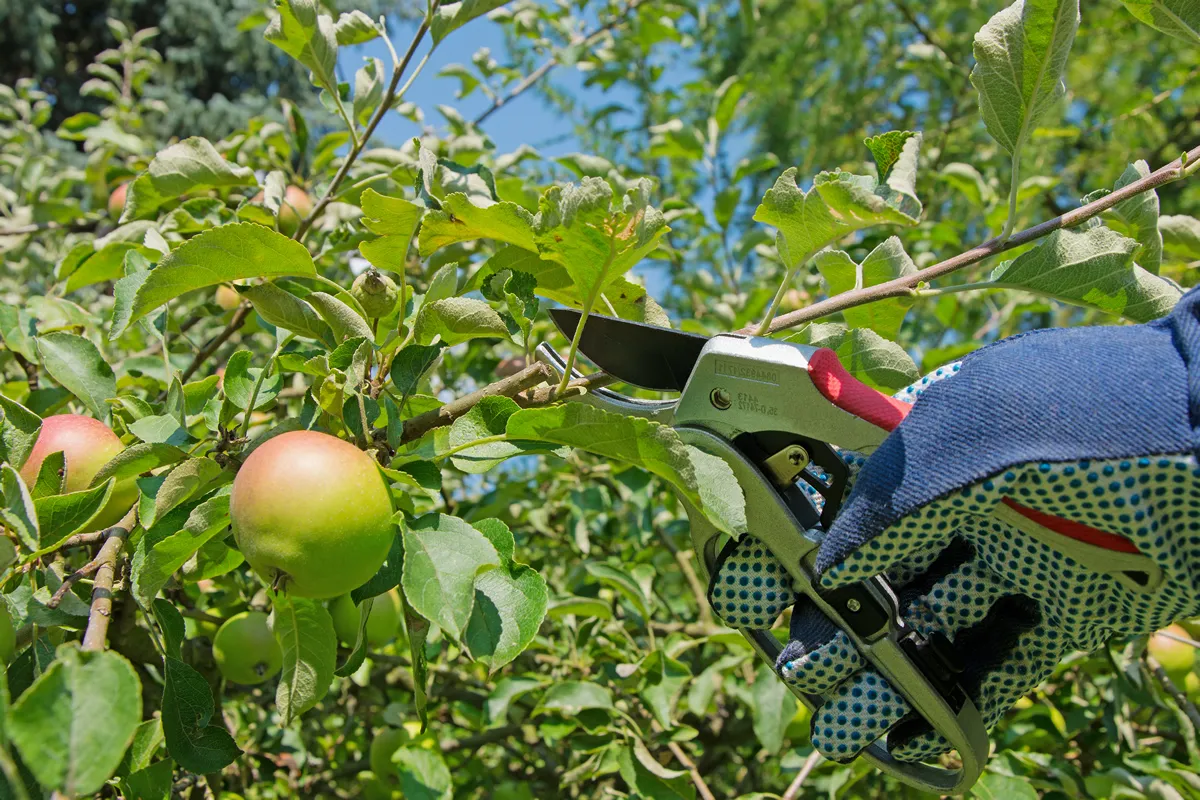
Pruning is an essential part of gardening, especially during the spring and summer months. It’s important to prune your apple trees during this time to ensure they remain healthy and continue to produce good fruit. Keep in mind that when it comes to pruning apple trees, there are some special considerations you need to take into account.
Start by assessing which branches will require pruning, you may wish to use the 1 in 3 method (as in the image above), especially if it had been hard pruned it the previously season. Then make sure any cuts are made at the appropriate angle, make your cut at 45 - 60 degrees away from the Bud. Choose a bud that faces outward from the center of the tree or away from other branches and make your angled cut just above it. There are two reasons why, the new growth will follow the direction of the Bud and you need it angled away for rain water, hopefully, rain will not settle on new cut, as this will encourage disease and fungus's to thrive.
Discard all dead or crossing branches and leave a few inches of wood attached to each branch; this will encourage new growth. Lastly, prepare for your finished product--you should expect a neat, dome-shaped tree where most fruiting branches face outwards from its center! With proper care and patience, your apple trees will bear delicious fruits for years to come!
The Difference between Thinning Cuts and Heading back
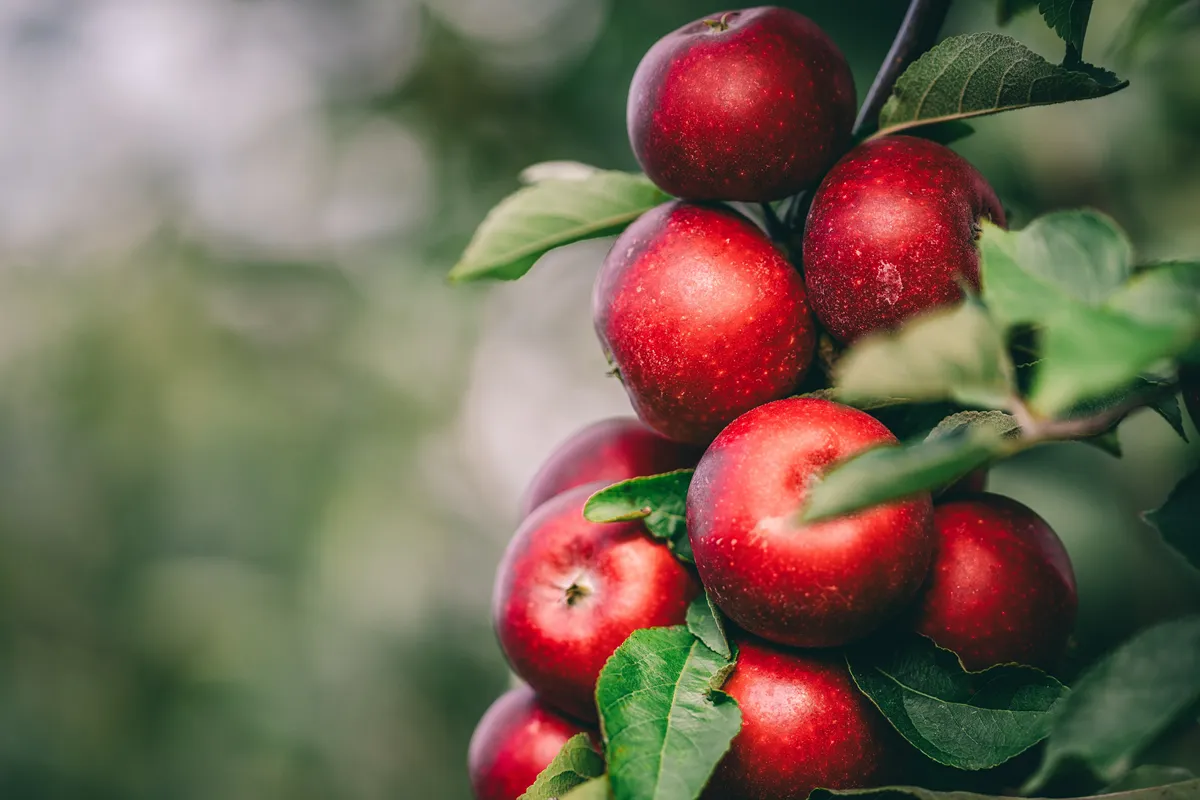
Gardening can be an incredibly rewarding experience. However, in addition to the joy that comes from cultivating a beautiful garden, there is also technical knowledge and skill required of any successful gardener. One of these topics is the difference between thinning cuts and heading back.
Thinning cuts involve removing whole branches by cutting at their base or along their length at a slight angle, while heading back involves removing just the growing tips of branches with sharp shears. This technique has the effect of reducing leaf production which can help control excessive growth or encourage denser branching respectively. Understanding which technique is appropriate and when to utilize it can mean the difference between a flourishing, attractive garden and one that is overgrown and neglected.
Reviewing Aftercare and Maintenance of Your Apple Tree After Pruning
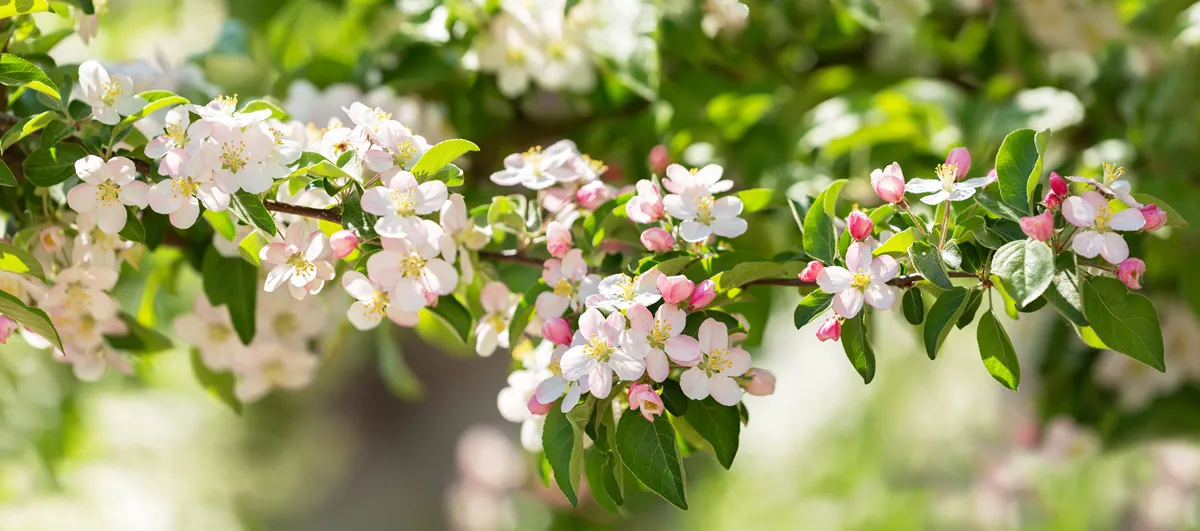
After pruning, your Apple tree requires special attention to ensure that it continues to grow strong and healthy. As part of proper aftercare and maintenance, it’s important to ensure that the tree is well watered and given sufficient nutrients.
Check the soil regularly and provide additional fertilizer if needed - this will help promote good health and growth of the tree. Additionally, make sure you control pests or fungus before they damage the tree any further. Since Apple trees are susceptible to certain diseases, it’s also best practice to inspect them regularly for signs of disease. With consistent attention and care, your Apple tree will blossom into a beautiful addition to your gardening endeavors.
Caring for an apple tree after pruning is crucial to ensure its healthy recovery and continued growth. Here are some steps to follow:
- 1. Clean Up: Remove and dispose of all the pruned branches, especially if they were diseased. This helps prevent the spread of any possible diseases or pests.
- 2. Protect the Cuts: If you've made large cuts on the tree, consider applying a tree wound dressing. This can help protect the exposed areas from pests and diseases. However, for smaller cuts, it's usually not necessary as trees can heal these naturally.
- 3. Watering: Ensure the tree gets plenty of water after pruning, especially during dry periods. However, avoid overwatering as this can lead to root problems.
- 4. Fertilizing: About a month after pruning, apply a balanced slow-release fertilizer to provide the tree with the nutrients it needs to recover and promote new growth. Avoid applying fertilizer immediately after pruning as it can promote too much tender new growth that can be damaged by cold weather.
- 5. Monitor the Tree: Keep an eye on your apple tree's health in the weeks and months following pruning. Watch for signs of disease or pests, and treat any issues promptly.
- 6. Mulching: Apply a layer of organic mulch around the base of the tree (but not touching the trunk) to help conserve moisture, suppress weeds, and add nutrients to the soil.
Remember that while pruning stimulates growth, it also causes stress to the tree. It's essential to provide proper care to the tree after pruning to support its recovery and ensure its health and productivity in the future.
Now that we have discussed the basics of pruning an apple tree, you should be equipped to start the process! Pruning can be tricky, so when in doubt, seek an arborist's advice before getting started. Understanding which techniques are available and understanding how each methods affect a tree’s structure is necessary so you can evaluate what is best for your situation. Furthermore, pruning at different times during the year also dictates the result of your efforts. The key is to properly size a tree based upon its vigor and overall health. Lastly, remember that aftercare and maintenance are equally as important as the initial pruning job; ensuring proper watering habits and fertilizing schedules can make all the difference in producing bountiful harvests now and well into the future.
A Complete Guide to Growing, Planting and Caring for a Apple Tree in the Uk
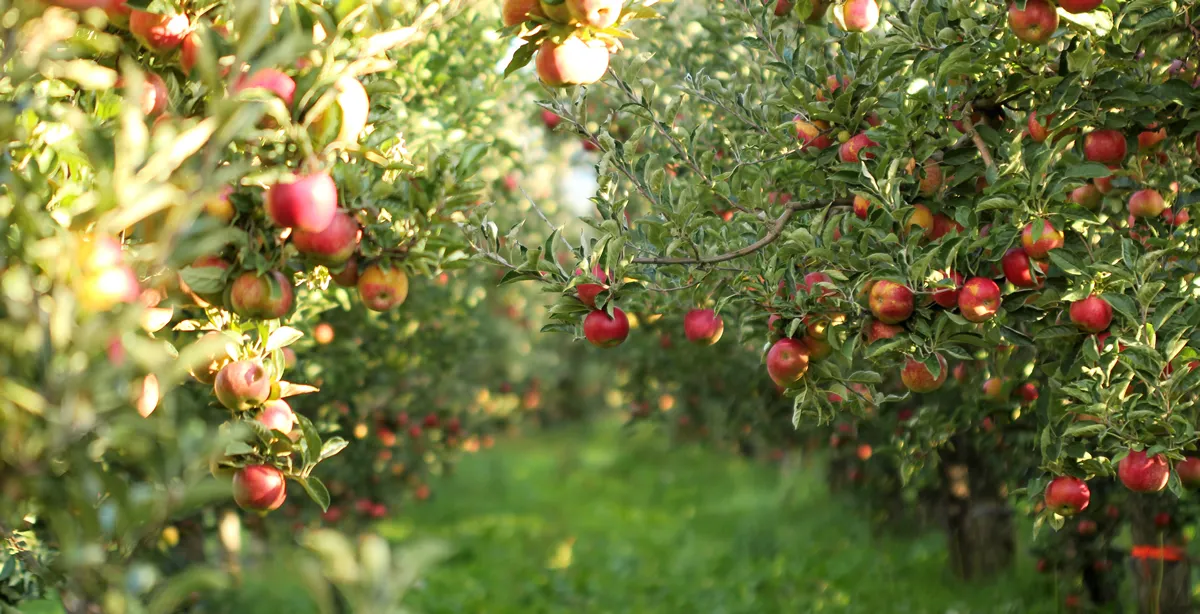
Do you want to learn how to grow, plant and care for an apple tree in the UK? If so, then look no further! Our complete guide will provide you with all the information and tips you need to get your own apple tree growing strong and producing healthy, delicious fruit. From choosing the right variety of apple tree suited for the UK climate through to pruning advice at different stages of growth - this guide has it all! So read on if you’re ready to take on a rewarding challenge that will last many years.
Selecting the Right Variety of Apple Tree
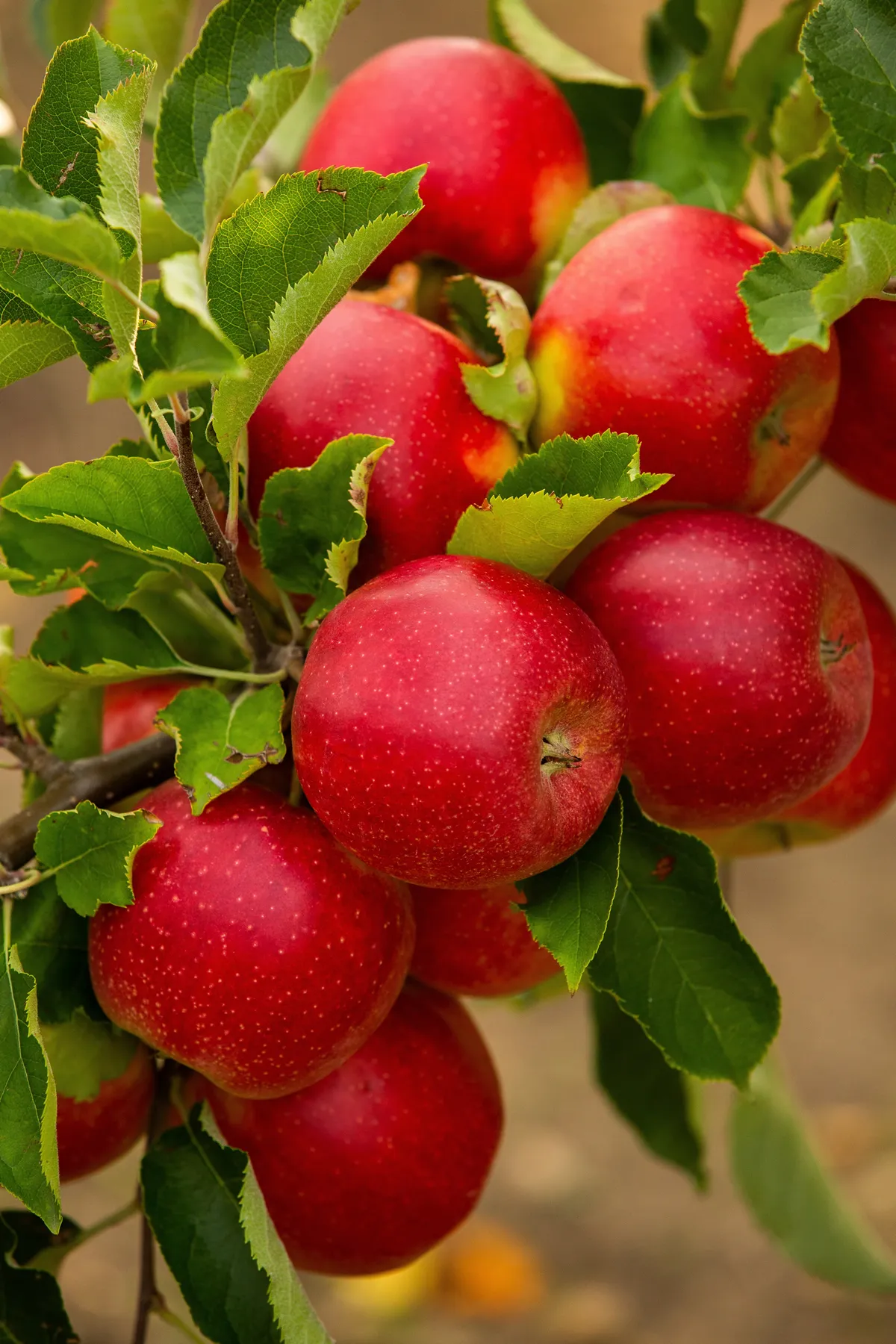
Selecting the right variety of apple tree can be an exciting and rewarding experience. However, it's important to carefully consider several factors before making your final decision. One of the most crucial considerations is the size of the apple tree, as some varieties may be too big for your garden or too small to produce enough apples. Moreover, the climate in your region plays a crucial role in determining which apple tree variety will thrive and adapt. Some varieties might require a milder climate, while others can withstand cold temperatures. Therefore, it's essential to do your research and choose a tree that is adaptable and suited to your specific growing conditions. By taking these considerations into account, you can ensure that you'll have beautiful, healthy, and fruitful apple trees for years to come.
Preparing the Soil for Planting an Apple Tree
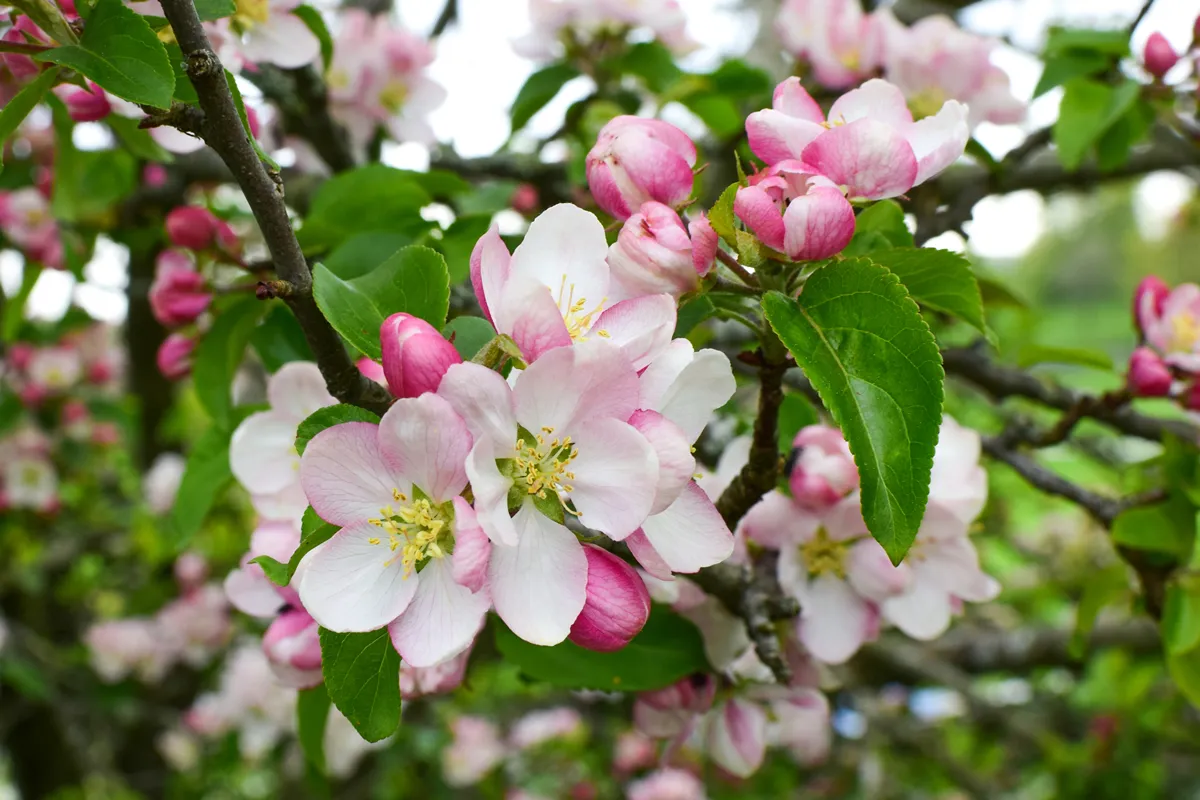
Preparing the soil properly is crucial for the successful growth of an apple tree. Here's a step-by-step guide on how to prepare your soil:
- Step 1: Test the Soil Before you start, it's a good idea to test your soil to understand its type and pH level. Apple trees prefer well-drained loamy soil with a pH between 6.0 and 7.0. You can buy a soil testing kit from most garden centers or online.
- Step 2: Choose the Right Location Apple trees need a location in full sun where the soil is well-drained. Avoid locations where water tends to collect or where the soil remains wet.
- Step 3: Clear the Area Remove any weeds, grass, or other plants from the area where you'll be planting the apple tree. These could compete with the tree for nutrients and water.
- Step 4: Improve the Soil If your soil is heavy clay or sandy, you'll need to improve it. Add organic matter such as compost, rotted manure, or leaf mold to help improve the soil structure, nutrient content, and moisture retention.
- Step 5: Dig a Hole Dig a hole that's twice as wide and just as deep as the root ball of your apple tree. This will loosen the soil and make it easier for the roots to establish.
- Step 6: Mix in Fertilizer Mix some balanced slow-release fertilizer into the soil at the bottom of the hole. This will give the tree a good start. Follow the instructions on the fertilizer package for the correct amount.
- Step 7: Fill the Hole with Soil Partially fill the hole with some of the improved soil. This will provide a good base for your apple tree to sit on.
Remember, preparing the soil correctly can make the difference between a struggling tree and one that thrives. Take the time to do it right, and your apple tree will reward you with healthy growth and delicious fruit.
Planting the Tree – Preparing the Site, Transplanting and Watering Requirements
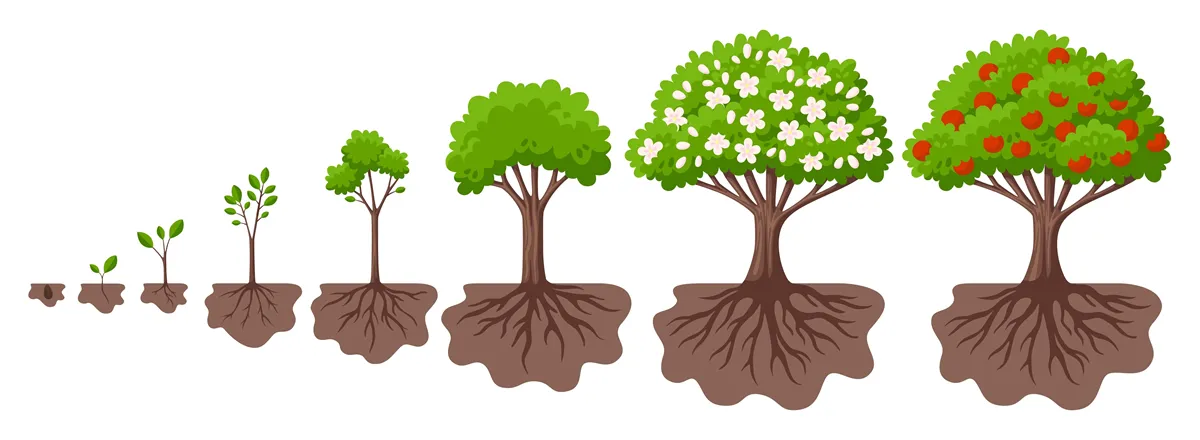
Gardening is an exciting hobby that offers several benefits, and planting trees is one of its most enjoyable activities. To ensure the success of your tree-planting endeavor, it's crucial to follow the necessary steps. Preparing the site involves selecting the perfect location for your tree, removing any grass or weeds, and digging a hole that's deep enough to accommodate your tree's roots. Transplanting requires critical handling of your tree, ensuring that you protect its roots and maintain its upright position. Finally, watering is a crucial aspect of tree care, especially during the first few weeks after planting. Ensuring that your tree gets adequate water helps it establish its roots and promotes healthy growth. With the right steps, you can plant a tree that will bring you and the environment numerous benefits.
Planting an apple tree can be a rewarding experience, resulting in a beautiful tree that produces fresh fruit for many years. Here's a step-by-step guide on how to plant an apple tree:
- Step 1: Choose the Right Tree Select an apple tree variety that will thrive in your climate and soil type. Consider factors such as size, disease resistance, and the type of apples it produces. For smaller gardens, choose dwarf or semi-dwarf varieties.
- Step 2: Choose the Right Time The best time to plant apple trees is in late autumn or early spring when the tree is dormant but the ground isn't frozen.
- Step 3: Choose the Right Location Apple trees need a sunny, well-drained location. They should be planted at least 3-6 metres apart, depending on the variety's mature size.
- Step 4: Prepare the Planting Hole Dig a hole that's twice as wide and slightly deeper than the root ball of your tree. The sides of the hole should be sloping and the bottom flat.
- Step 5: Prepare the Tree If you're planting a bare-root tree, soak the roots in water for several hours before planting. If you're planting a container-grown tree, water it well in its pot before planting.
- Step 6: Plant the Tree Place the tree in the center of the hole. The graft union (the swollen area near the base of the trunk) should be above the soil level to prevent the scion from rooting. Backfill the hole with the excavated soil, firming it gently around the roots.
- Step 7: Water Thoroughly After planting, water the tree thoroughly to settle the soil around the roots.
- Step 8: Stake the Tree Stake the tree to provide support, especially if you're in a windy location. Use a tree tie that won't cut into the bark as the tree grows.
- Step 9: Mulch Around the Base Apply a layer of mulch around the base of the tree (but not touching the trunk) to conserve moisture, suppress weeds, and add nutrients to the soil.
- Step 10: Care for Your Tree In the first year after planting, water your apple tree regularly, especially during dry spells. Prune lightly to shape the tree, but avoid heavy pruning until the tree has been in the ground for a year.
Remember, patience is key. Most apple trees take a few years to start bearing fruit, but with proper care, they can provide a bountiful harvest for many years to come.
Caring for a Young Apple Tree – Pruning Tips, Feeding Needs, and Dealing with Pests and Diseases
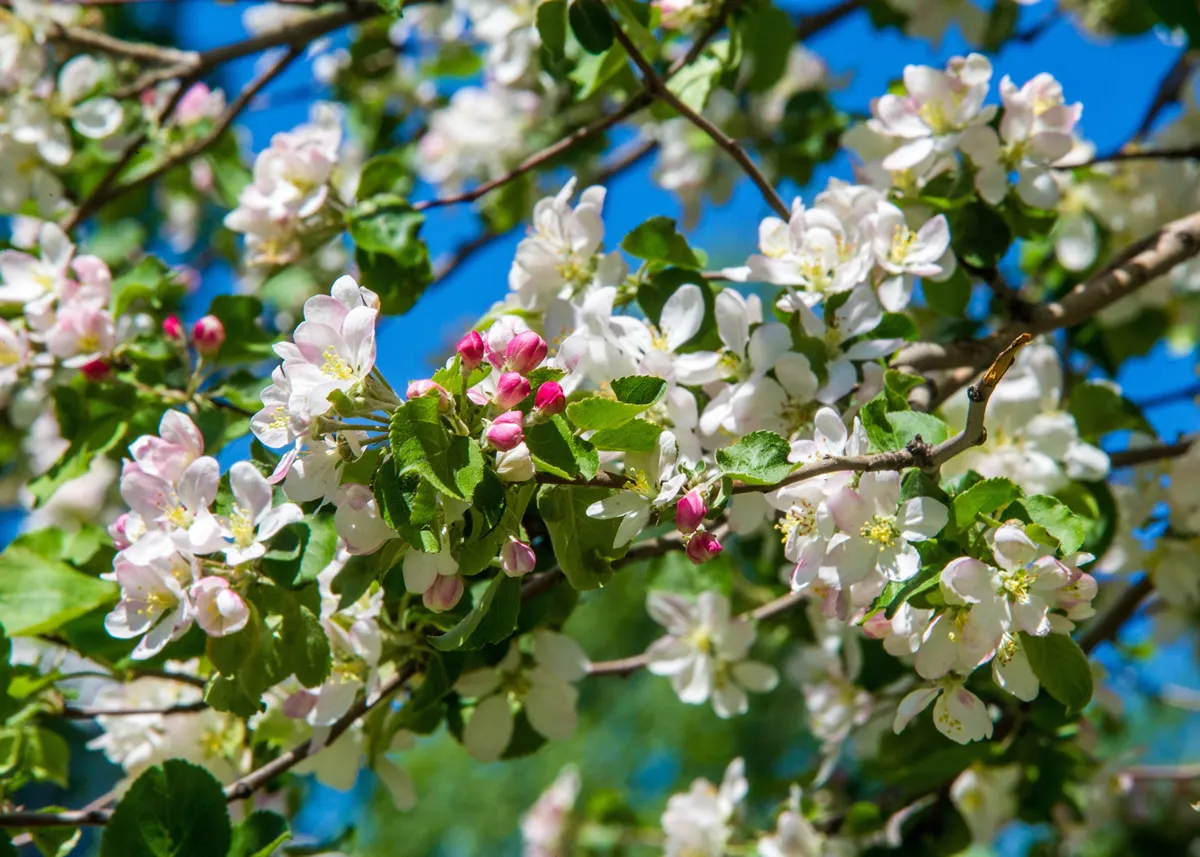
Gardening is a rewarding pastime that requires patience, care, and dedication. If you're growing a young apple tree, there are a few things you need to keep in mind to ensure its proper growth and development. Pruning is essential for shaping your tree, promoting air circulation, and removing damaged or diseased branches. It's also important to fertilize your tree regularly, especially during its first few years. Additionally, you'll need to keep an eye out for pests and diseases that can harm your apple tree. With the right knowledge and tools, you can maintain a healthy and fruitful tree that will provide you with delicious apples for years to come.
Caring for an Apple Tree | Encouraging Healthy Growth through Mulching and Composting
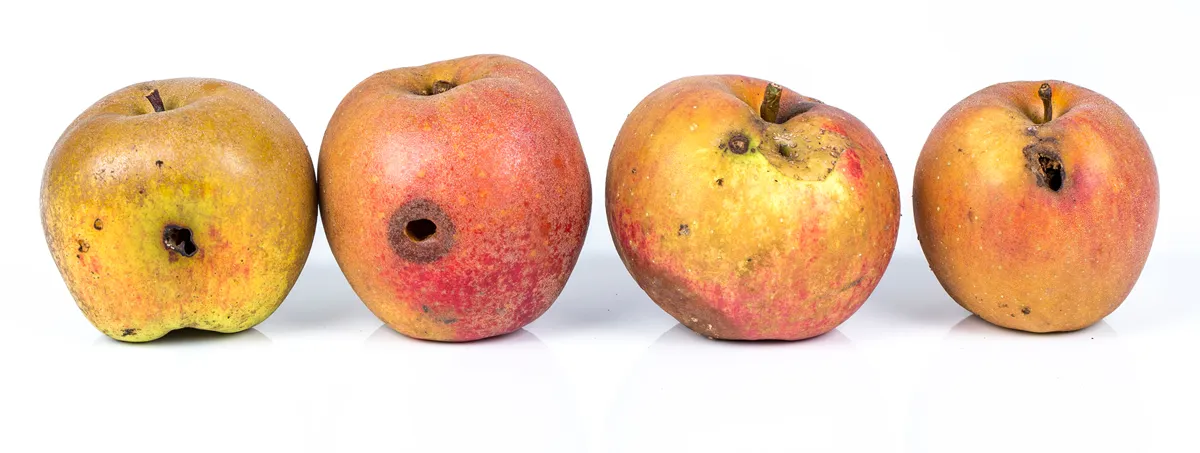
If you have an apple tree in your garden, you know just how rewarding it can be to grow your own fruit. However, caring for your apple tree can be a challenge, especially if you want to encourage healthy growth and a bountiful harvest. One way to do this is through mulching and composting. Mulching involves laying a protective layer of organic matter, such as leaves or wood chips, around the base of your tree. This helps to retain moisture and provides important nutrients for the roots. Composting, on the other hand, involves creating a nutrient-rich soil amendment from organic matter such as food scraps and yard waste. By incorporating this into your soil, you can create a healthy environment for your apple tree to thrive in. With a little bit of gardening know-how, you can ensure that your apple tree produces delicious fruit for years to come.
Mulching apple trees can provide numerous benefits, including retaining soil moisture, suppressing weeds, moderating soil temperature, and adding organic matter to the soil. Here's what you need to know about the recommended mulch for apple trees and how to apply it:
Recommended Mulch for Apple Trees
- Organic Mulch: Organic mulches like wood chips, compost, or rotted manure are often recommended for apple trees. They gradually break down, improving soil structure and fertility over time.
- Wood Mulch: If using wood mulch, it should be layered on top of a nutritious mulch like compost or rotted manure. This is because decomposing wood mulch can temporarily deplete nitrogen in the soil.
- Bark Mulch: Bark mulch is also a good fit for apple trees. It's long-lasting, breaks down to replenish nutrients in the soil, and works well in suppressing weeds.
- Mulch from Deciduous Trees: Mulch made from faster-decomposing deciduous trees like alder, maple, willow, and birch can also be beneficial. Alder or willow wood chips, in particular, can make great mulch for apple trees.
How to Apply Mulch
- Clear the Area: Remove any grass or weeds from around the base of the tree. These could compete with your apple tree for water and nutrients.
- Apply the Mulch: Spread a layer of your chosen mulch around the base of the tree. The mulch layer should be about 2 to 4 inches thick.
- Leave Some Space: Make sure to leave a gap around the trunk of the tree – don't pile the mulch against it. This can cause the bark to rot, which can lead to disease or pest problems.
- Refresh the Mulch: Over time, the mulch will break down and its level will decrease. Top it up as needed to maintain a layer that's 2 to 4 inches thick.
Remember, while mulching is beneficial for apple trees, it's just one part of a comprehensive care routine. Regular watering, annual pruning, and periodic feeding are also important for keeping your apple tree healthy and productive.
Regular Maintenance for an Established Apple Tree – Watering Practices, Preventative Measures for Springtime Frost Damage
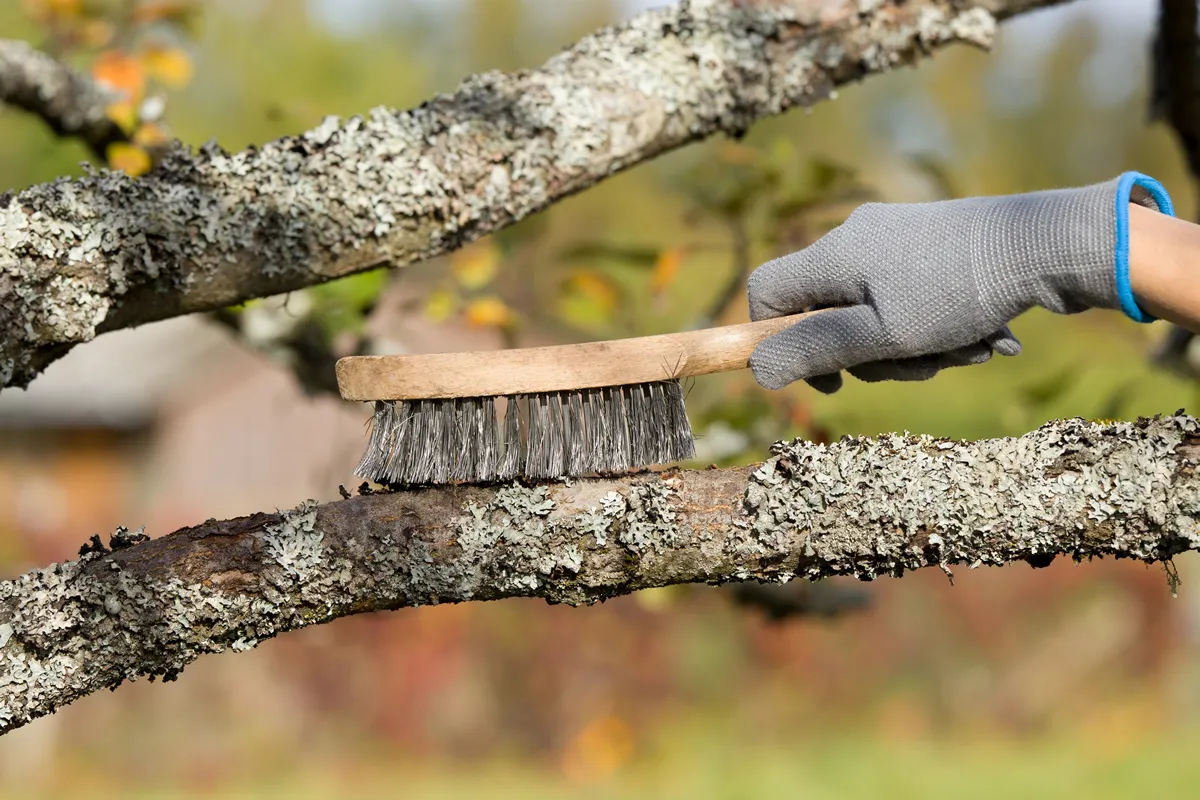
A well-established apple tree is a beautiful addition to any garden, but it requires regular maintenance to thrive and produce delicious fruit. Watering practices are essential for the tree's health, as it needs consistent, deep watering during the growing season. However, overwatering can cause root issues and even fungal diseases. You can prevent frost damage in the spring by covering the tree with frost blankets or sheets to protect against sudden temperature drops. Pruning dead branches, thinning out crowded ones, and keeping the tree's canopy open will also improve airflow and bolster its resistance to frost. With proper care, your apple tree will bear fruit year after year for your enjoyment.
Preparing your apple tree for winter is an important part of ensuring its health and productivity. Here are some steps you can take to prepare your apple tree for the colder months:
- Step 1: Clean Up Start by cleaning up debris around the base of the tree. Remove any fallen leaves or fruit that could harbor pests or diseases over the winter.
- Step 2: Prune While major pruning is usually done in late winter or early spring, you can remove dead, diseased, or damaged branches in the fall.
- Step 3: Apply Mulch Apply a layer of mulch, like straw or wood chips, around the base of the tree to insulate the roots from extreme temperatures. The mulch also helps retain moisture and suppress weeds.
- Step 4: Water Keep your apple tree well-watered until the ground freezes. This is particularly important if there has been little rain in the fall. A well-hydrated tree is better equipped to withstand winter cold.
- Step 5: Protect the Trunk Wrap the trunk with a tree wrap or use a tree guard to protect it from winter sunscald and from small animals that might chew on the bark.
- Step 6: Monitor for Pests Check the tree regularly for signs of pests or disease and treat as necessary. Some pests, like the codling moth, overwinter in the bark or soil and can be controlled with a dormant oil spray.
Remember, each apple tree and location may have different needs, so it's always a good idea to consult with a local extension service or nursery for specific advice. With proper care, your apple tree can stay healthy through the winter and be ready to bloom in the spring.
How to Propagate an Apple Tree
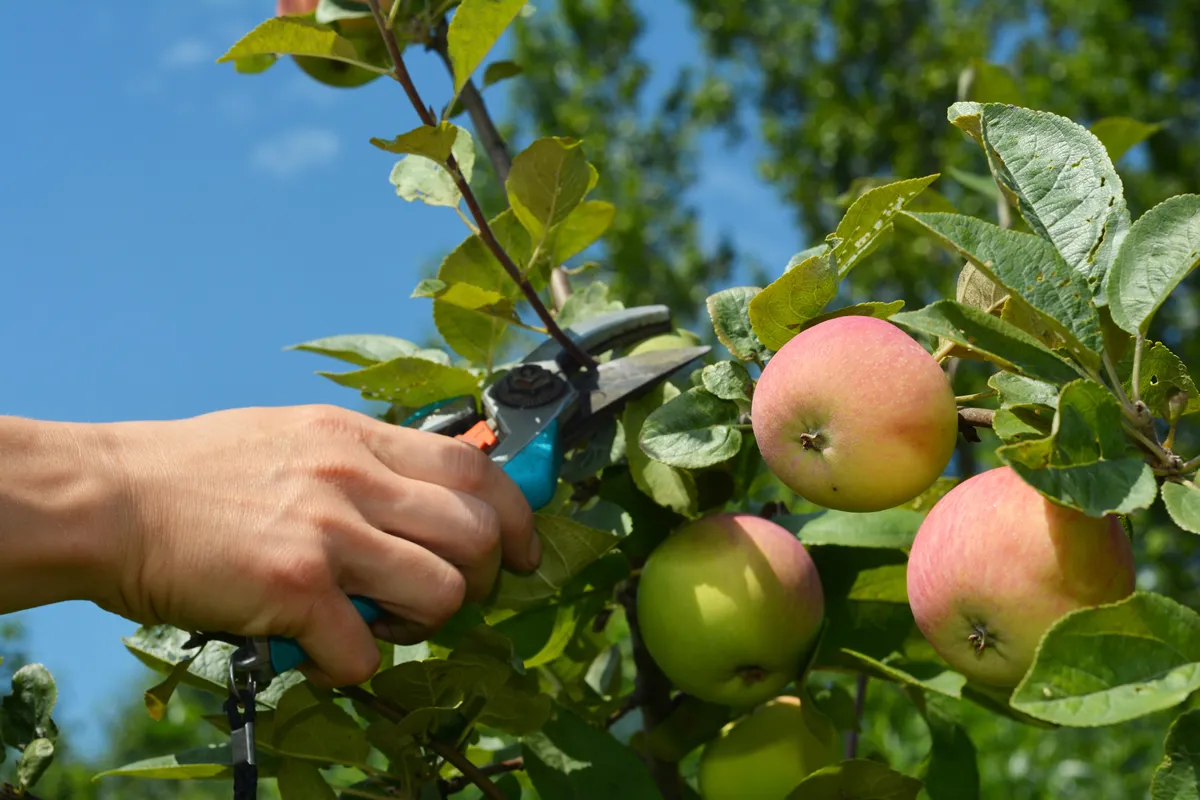
If you're a fruit lover, you might be interested in growing apple trees. But let's face it, buying apple saplings can be expensive. That's why learning how to propagate an apple tree is a great skill to have. Propagation may sound intimidating, but it's actually quite simple. You can use cuttings taken from a mature apple tree to grow new trees. Not only is it cost-effective, but propagating an apple tree can also ensure genetic diversity and health of your orchard. In this process, the cuttings are taken during the dormant season and then dipped in rooting hormone and planted in well-draining soil. All you have to do is provide regular watering, sunshine, and some patience, and in a few years, you'll have a healthy, thriving apple tree!
Propagating an apple tree from cuttings can be a bit challenging, as apple trees are usually propagated by grafting to ensure the new trees bear fruit that's identical to the parent tree. However, it's still possible to grow apple trees from cuttings. Here's a step-by-step guide:
- Step 1: Choose the Right Time The best time to take cuttings from apple trees is in late fall or winter when the tree is dormant.
- Step 2: Select a Healthy Branch Choose a healthy branch from the apple tree that's about one year old. The branch should be disease-free with several buds.
- Step 3: Prepare the Cutting Use a sharp, sterile knife or pair of secateurs to cut a piece of the branch that's about 6-10 inches long. Make sure the cutting has at least two or three buds. Cut the bottom end at a 45-degree angle to increase the surface area for root formation.
- Step 4: Treat the Cutting Dip the cut end of the cutting into rooting hormone powder. This helps stimulate root growth.
- Step 5: Plant the Cutting Fill a pot with a mix of half perlite and half peat moss. Make a hole in the center of the potting mix and insert the treated end of the cutting into the hole. Firm the potting mix around the base of the cutting.
- Step 6: Water and Cover Water the potting mix until it's thoroughly moist, then cover the pot with a clear plastic bag or a plastic bottle cut in half. This creates a miniature greenhouse that maintains high humidity around the cutting.
- Step 7: Place in a Suitable Location Place the pot in a warm location with indirect sunlight. Avoid direct sunlight as it can overheat the cutting and dry it out.
- Step 8: Wait for Root Development Keep the potting mix moist but not waterlogged. After several weeks, roots should start to form. To check, gently tug on the cutting. If it resists, roots have started to develop.
- Step 9: Transplant the Cutting Once the cutting has developed a healthy root system, it can be transplanted to a larger pot or its final location in the garden.
Remember, growing apple trees from cuttings may not produce a tree that's true to the parent type. For this reason, many people choose to graft cuttings onto rootstock to ensure they get the exact type of apple they want.
Growing an Apple Tree from Seed

Growing an apple tree from a seed can be a rewarding and fulfilling experience for any plant enthusiast. It’s an opportunity to watch something small and delicate grow into a strong and fruitful tree over time. To begin, start by selecting healthy apple seeds from an apple that you enjoy. The next step is to plant the seeds in a pot of soil and keep it in a warm and sunny spot. Patience is key, as it can take weeks or even months before the seed germinates. Once you have the beginnings of a plant, continue to care for it by keeping the soil moist and transferring it to a bigger pot once it outgrows the first. With proper care and attention, your apple tree will thrive and may even produce delicious fruit in the years to come.
Growing an apple tree from seed can be a rewarding project, but it's important to remember that the resulting tree may not produce fruit identical to the apple from which you took the seed. Here's a step-by-step guide to growing an apple tree from seed:
- Step 1: Collect Apple Seeds Start by eating a few different types of apples and collecting the seeds. This increases your chances of success as different varieties have different germination rates.
- Step 2: Prepare the Seeds Rinse off any residue from the seeds and let them dry on a paper towel for a few days.
- Step 3: Stratify the Seeds Apple seeds need a period of cold to germinate, a process known as stratification. Wet a paper towel, wring out the excess water, and fold the seeds inside it. Place this in a plastic bag and put it in the refrigerator for about 6 weeks.
- Step 4: Plant the Seeds After cold stratification, plant the seeds in a pot filled with potting mix. Plant them about half an inch deep and keep the soil moist.
- Step 5: Provide Light and Warmth Place the pot in a sunny window or under a grow light. The seeds need warmth to germinate, so ensure the room temperature is at least 60-70°F (15-21°C).
- Step 6: Wait for Germination Germination can take anywhere from a couple of weeks to a couple of months. Keep the soil moist but not waterlogged.
- Step 7: Transplant Seedlings Once your seedlings have grown a couple sets of true leaves, you can transplant them into individual pots if necessary.
- Step 8: Gradual Outdoor Exposure When the risk of frost has passed, gradually expose your young apple trees to outdoor conditions over a week or two to harden them off before planting out.
- Step 9: Plant Outdoors Choose a sunny location with good drainage and plant your apple trees, ensuring the hole is twice as wide and the same depth as the root ball.
- Step 10: Care for Your Tree Water regularly, especially in dry periods. Apply mulch around the base of the tree to conserve moisture and suppress weeds.
Remember, apple trees grown from seed can take several years to bear fruit, and the apples may not be the same as the parent tree. For a guaranteed variety, consider buying a grafted tree from a nursery.
Growing Apple Trees in Pots or Containers
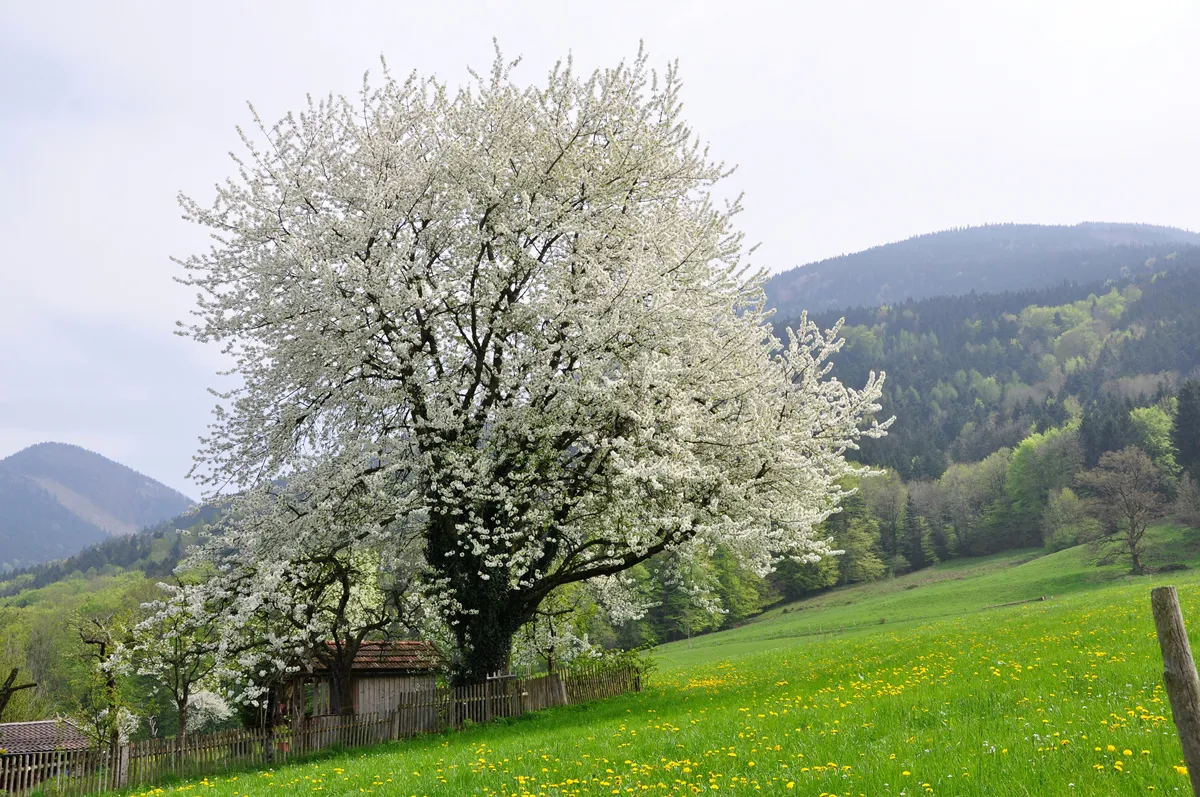
Gardening is a relaxing hobby enjoyed by many, but what if you don't have space for a full-sized apple tree? Fear not, because growing apple trees in pots or containers is a viable option. With the use of the right containers and soil, apple trees can thrive in compact spaces, making it possible to enjoy the fruits of your labor in even the smallest garden or balcony. Not only do they provide a beautiful aesthetic, but container-grown apple trees also require less maintenance than their fully-grown counterparts, and can be easily moved to a warmer or sunnier spot depending on the season. So if you're looking to spruce up your gardening game, consider planting an apple tree in a container - it's a sweet and fruitful investment!
Growing an apple tree in a container or pot allows you to enjoy fresh apples even if you don't have a large garden. Here's a step-by-step guide:
- Step 1: Choose the Right Tree Select a dwarf or semi-dwarf apple tree variety, which is more suitable for container growing. These trees are smaller but still produce full-sized fruit.
- Step 2: Select the Right Container Choose a large container with good drainage holes. The pot should be at least 18-22 inches in diameter to provide enough room for the roots to grow.
- Step 3: Use the Right Soil Fill your container with potting soil, or a mix of compost and regular garden soil. Apple trees prefer well-drained soil, so make sure your mix isn't too heavy or water-retentive.
- Step 4: Plant the Tree Plant the tree at the same depth it was growing in its previous pot. The graft union (the swollen area near the base of the trunk) should be above the soil level. Fill in around the tree with soil, firming it gently.
- Step 5: Water Thoroughly After planting, water the tree thoroughly, making sure the soil is evenly moist but not waterlogged.
- Step 6: Place the Container in a Sunny Spot Apple trees need at least six hours of sunlight each day, so place your container in a sunny location.
- Step 7: Regular Care Water regularly, especially during dry spells, as containers can dry out quickly. Feed with a balanced slow-release fertilizer according to package instructions, typically in early spring and mid-summer.
- Step 8: Prune Annually Prune the tree in late winter or early spring to maintain its shape and size. Remove any dead, diseased, or crossing branches.
- Step 9: Protect Over Winter In colder climates, protect your container-grown apple tree over winter by moving it to a sheltered location, like a garage or shed.
Remember, while container-grown apple trees can be a great way to grow your own fruit in a small space, they will require a bit more care than trees grown in the ground. Regular watering, feeding, and pruning are essential for a healthy, productive tree.
Growing an apple tree requires considerable attention and effort, but the joys of harvesting home-grown fruits will make it worth the work. For those who are just starting out, selecting the right variety for their climate and size consideration is important. Preparing the soil and site for planting is also critical to ensure healthy growth and output of apples. Furthermore, young trees need special care through pruning, feeding, and pest control while should be taken into account. Established trees require regular maintenance such as watering practices and preventative measures. Finally, propagating or growing an apple tree from a seed can also be considered to start a new tree that may have certain benefits over purchased ones. With planning, dedication, and proper care, growing an apple tree can be a truly rewarding experience for any gardener or homeowner!
How to Prune Climbing Vines
List by Variety
- How to Prune Actinidia
- How to Prune Akebia
- How to Prune Bougainvillea
- How to Prune Campsis
- How to Prune Celastrus
- How to Prune Chilean Glory Vine
- How to Prune Clematis Armandii
- How to Prune Clematis Montana
- How to Prune Climbing Rose
- How to Prune Hedera GoldHeart
- How to Prune Honeysuckle
- How to Prune Hydrangea Petiolaris
- How to Prune Ivy
- How to Prune Japanese Wisteria
- How to Prune Morning Glory
- How to Prune Parthenocissus
- How to Prune Persian Ivy Hedera Colchica
- How to Prune Schisandra
- How to Prune Star Jasmine
- How to Prune Sweet Peas
- How to Prune True Jasmine
- How to Prune Virginia Creeper
- How to Prune Wisteria
How to Prune Hedges
List by Variety
- How to Prune an Arborvitae Hedge
- How to Prune a Barberry Hedge
- How to Prune a Beech Hedge
- How to Prune a Boxwood Hedge
- How to Prune a Butterfly Bush Hedge
- How to Prune a Cotoneaster Hedge
- How to Prune an English Lavender Hedge
- How to Prune an Escallonia Hedge
- How to Prune an Euonymus-Hedge
- How to Prune a Firethorn Hedge
- How to Prune a Forsythia Hedge
- How to Prune a Griselinia Hedge
- How to Prune a Hawthorn Hedge
- How to Prune a Holly Hedge
- How to Prune a Hornbeam Hedge
- How to Prune a Laurel Hedge
- How to Prune a Leylandii Hedge
- How to Prune a Lilac Hedge
- How to Prune a Maple Leaf Viburnum Hedge
- How to Prune a Photinia Hedge
- How to Prune a Pink Ramanus Rose Hedge
- How to Prune a Privet Hedge
- How to Prune a Pyracantha Hedge
- How to Prune a Spirea Hedge
- How to Prune a Thuja Hedge
- How to Prune a Viburnum Hedge
- How to Prune a Western Red Cedar Hedge
- How to Prune a Yew Hedge
How to Prune Shrubs
List by Variety
- How to Prune an Abelia Shrub
- How to Prune an Abutilon
- How to Prune an Acer / Japanese-Maple
- How to Prune an Amelanchiers
- How to Prune an Apple-Tree
- How to Prune an Arbovitae Shrub
- How to Prune an Arbutus
- How to Prune an Aucuba
- How to Prune a Azalea Mollis
- How to Prune Azaleas
- How to Prune a Bay Tree Shrub
- How to Prune a Berberis Darwinii
- How to Prune Berberis Deciduous Types
- How to Prune a Boxwood Shrubs
- How to Prune a Brachyglottis Senecio
- How to Prune a Buddleia Alternifolia
- How to Prune Buddleias Butterfly Bushes
- How to Prune a Buddleja Globosa
- How to Prune a Callicarpa
- How to Prune a Camellia
- How to Prune a Caryopteris
- How to Prune a Catalpa Bignonioides Aurea
- How to Prune Ceanothus Deciduous Types
- How to Prune Ceanothus Evergreen Types
- How to Prune a Ceratostigma
- How to Prune a Chaenomeles
- How to Prune a Choisya
- How to Prune a Cistus
- How to Prune a Clematis
- How to Prune a Cornus
- How to Prune a Cotinus Royal Purple
- How to Prune a Cytisus Scoparius
- How to Prune a Exochorda x Macrantha
- How to Prune a Forsythia
- How to Prune a Hebe
- How to Prune a Hydrangeas
- How to Prune Juniper Shrubs
- How to Prune a Lavatera
- How to Prune Lilac Bushes
- How to Prune a Mugo Pine
- How to Prune Rose Bushes
- How to Prune Spirea Shrubs
- How to Prune Viburnum Shrubs
- How to Prune a Weigela
- How to Prune a Yew
How to Prune Trees
List by Variety
- How to Prune a Apple Tree
- How to Prune a Apricot Tree
- How to Prune a Ash Tree
- How to Prune a Birch Tree
- How to Prune a Cherry Tree
- How to Prune a Elm Tree
- How to Prune a Fig Tree
- How to Prune a Grape Tree
- How to Prune a Hickory Tree
- How to Prune a Maple Tree
- How to Prune a Oak Tree
- How to Prune an Olive Tree
- How to Prune a Peach Tree
- How to Prune a Pear Tree
- How to Prune a Plum Tree
- How to Prune a Poplar Tree
- How to Prune a Walnut Tree
Pests and Diseases
- How to Protect from Anthracnose
- How to Protect from Athids
- How to Protect from Apple Scab
- How to Protect from Armillaria Root Rot
- How to Protect from Bagworms
- How to Protect from Black Knot
- How to Protect from Black Rot
- How to Protect from Black Spot
- How to Protect from Botryosphaeria Dieback
- How to Protect from Botrytis Blight
- How to Protect from Brown Rot
- How to Protect from Canker Diseases
- How to Protect from Caterpillars
- How to Protect from Cedar Apple Rust
- How to Protect from Clematis Wilt
- How to Protect from Codling Moths
- How to Protect from Crown Gall
- How to Protect from Crown Rot
- How to Protect from Downy Mildew
- How to Protect from Dutch Elm Disease
- How to Protect from Elm Bark Beetle
- How to Protect from Elm Leaf Beetle
- How to Protect from Fire Blight
- How to Protect from the Gypsy Moth Caterpillars
- How to Protect from Honey Fungus
- How to Protect from Japanese Beetles
- How to Protect from Juniper Scale
- How to Protect from Lace Bugs
- How to Protect from Lacewings
- How to Protect from Leaf Miners
- How to Protect from Leaf Spot Diseases
- How to Protect from Mealybugs
- How to Protect from Needle Blight
- How to Protect from Oak Borers
- How to Protect from Oak Wilt
- How to Protect from Olive Knot Disease
- How to Protect from Peach Leaf Curl
- How to Protect from Peach Scab
- How to Protect from Pear Psylla
- How to Protect from Pear Rust
- How to Protect from Pear Scab
- How to Protect from Perennial Canker
- How to Protect from Pine Sawflies
- How to Protect from Pine Shoot Beetle
- How to Protect from Plum Fruit Moth
- How to Protect from Plum Pox Virus
- How to Protect from Poplar Borer
- How to Protect from Powdery Mildew
- How to Protect from Root Rot
- How to Protect from Rose Rosette Disease
- How to Protect from Rust Fungi
- How to Protect from Scale Insects
- How to Protect from Silver Leaf Disease
- How to Protect from Slugs
- How to Protect from Spider Mites
- How to Protect from Twig Blight
- How to Protect from Verticillium Wilt
- How to Protect from Viburnum Beetle
- How to Protect from Vine Weevil
- How to Protect from Walnut Blight
- How to Protect from Walnut Husk Fly
- How to Protect from Walnut Scale
- How to Protect from Western Flower Thrips
- How to Protect from Whiteflies
Popular Pruning Sections

General Pruning
General Information on How to Prune your Garden
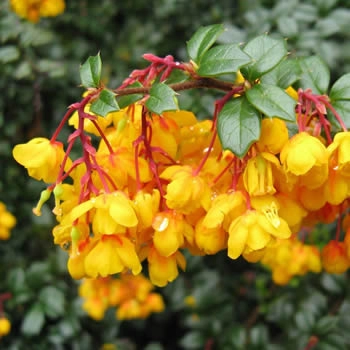
Pruning Shrubs
The Most Read Shrubs to Prune
- How to Prune Hydrangeas
- How to Prune a Rose Bush
- How to Prune Azaleas
- How to Prune a Lilac Bush
- How to Prune Buddleias - Butterfly Bushes
- How to Prune Forsythia
- How to Prune Weigela
- How to Prune Hebe
- How to Prune Camellia

Pruning Trees and Climbers
The Most Read Trees to Prune
- How to Prune Apple Trees
- Pruning Plum Trees
- Pruning Cherry Trees
- Pruning Olive Trees
- How to Prune a Grape Vine
- Acer Pruning | Pruning Japanese Maple
- How to Prune a Fig Tree
- Pruning Peach Trees
- Pruning Pear Trees
- How to Prune a Plum Tree


